#this took me like 4 hours to draw and i like the final output
Explore tagged Tumblr posts
Text

a lil art trade with mah fren @kanotorin!! you guys should check them out, they make good sally face art :]!!!
blood version below !!
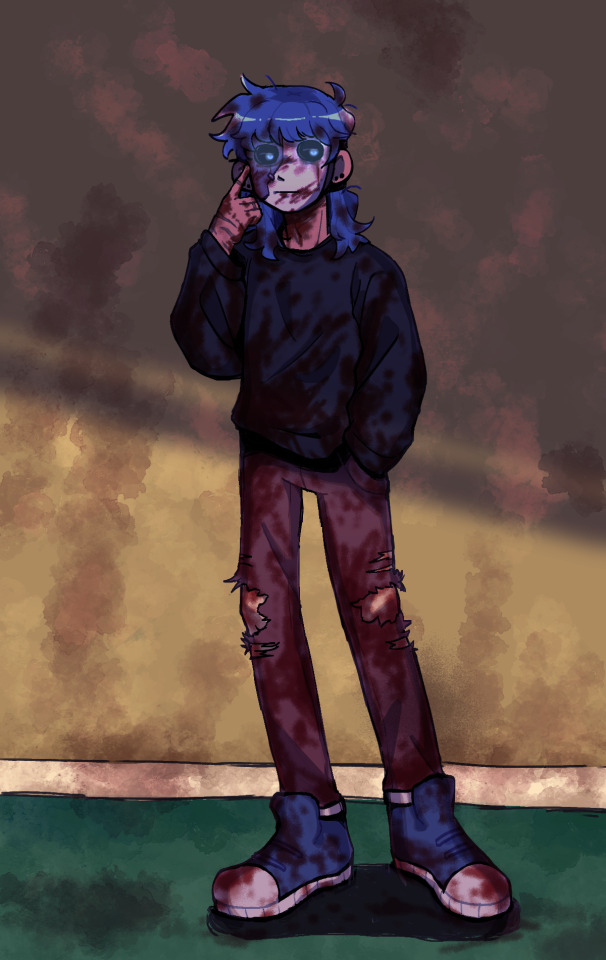
#art trade#sally face#sal fisher#blood tw#ahmm yes insert tags here so real#this took me like 4 hours to draw and i like the final output#man i missed sally face
134 notes
·
View notes
Text
Hi! I really like making beats, recently started to make a discord server🔞 where only a few of my friends have joined.... Most of them are people that I've met in the last year or sooner. All of them haven't treated me any differently from me being as myself as I can be. Normally, I don't share my thought's or creative outputs due to fear of judgment. I've made this Tumblr for me to post anything on my mind or to post openly. Anyways😅
...
My name is Curly, I'm a Transgender female, in my 20s... I've been involved with music for 10+ years but this year, I started Producing my own beats. Previous experiences has lead me to Video editing (12+ years). I haven't only spent my time living in the City.. I grew up kind of in the mix between country & Bigger Cities.. Younger me liked to explore a lot, I'd go on walks and disappear for hours listening to the same tracks on an iPod Classics... One of those old ones with 256gb. I maxed out the storage in middle school. I'm glad to be out of the toxic space I was in & I kinda finally feel like I'm headed in the direction I want to be going. Through my journey, I've lived in the woods (a fishing resort) for about 4 months. Learning all kinds of trades. With stories like being charged by a bear with mom's cubs climbing a tree😆. - I should note I normally use a lot of emojis... I tend to because I feel as though I can't articulate myself properly... Plus I really don't want people to misinterpret what I'm saying at all...😅 I enjoy gaming... So much to the point I've been guided by a friend to make a game. I've been taking my time to learn & slowly get organized, as I move soon. More Space! I finally get to use 2 monitors again & have a setup with a decent chair.. The game I'm going to make is a visual novel, I have 2 - I'm currently working on with a few other ideas I could work on in the future... I'm learning pieces of Python, Ren'py and small amounts of other code. I'll be making the entire visual novel myself, both games! I might get some help through people I meet through my future journey.. & I really look forward to it! but I'm currently still in a learning phase for what I really wanna do. It took me a really long time to realize or find the right people I needed to surround myself with... or I guess people I want to be around! I'll probably post again tomorrow, but I don't really have a schedule until the move... I really enjoy writing, I spent most of my high school years trying to figure out how rhythm works with words... Trying to match words to a beat... Took me a really long time to figure out on my own. Now, I'm so grateful for the people around that have nurtured me especially when I was most vulnerable. I care very deeply for those around me & sticking around. I was essentially left in the Dust by a group of YouTubers trying to make a Quick Buck during the Pandemic. I never made a penny... I tried to keep up with their level of business and dug myself a hole... Now I'm building what I hope to be my future from this point on. All I want to do is draw & learn... I want to constantly Learn from/with people. I have a huge interest in what's going to come in the future! Hope whoever reads this has a good weekend. Hopefully I'll post again soon. Stream plz cut it out by Curly | Listen online for free on SoundCloud
0 notes
Text
What in the World? (Akaashi Keiji x Reader) pt.12
a/n: it begins >:)
Akaashi’s lineup: @alluring-akaashi @oikawalmart-hq @extrasugafree @bbykiyoomi @apricotjihyo @awings @simpformiya @sayakaaaaaa @colorseeingchick @demursv1ogs @chrisrue15 @beanst0ck @something-that-idk (i have no idea why i can’t tag some of you :( huhu )
links: part 1, part 2, part 3, part 4, part 5, part 6, part 7, part 8, part 9, part 10, part 11, part 13

Time flew by so fast in this dimension. Now that you were well adjusted and loving the new life here, it had not dawned on you that 7 months had already passed. Things were moving smoothly and pleasantly.
“Here you go.” Akaashi handed you a snack bar. The two of you (well maybe three if Bokuto is included) were practically inseparable. The team had finally managed to pin the both of you down and confirm that you two were indeed dating. “Did you sleep well?”
Walking to school was still a thing both of you did. Except this time, fingers were intertwined and barely any distance between the both of you. The only time you two let go was when the school gates were near. Still, walking down the hallways, Akaashi made sure to always brush his fingers with yours.
“I did!” You pulled him in to kiss his cheek. The small smile he gave you still made your stomach butterflies flutter. “I did have a weird dream last night. You and Bokuto-san switched personalities. Seeing you do his ‘HEY HEY HEY’ was just so wrong on all levels.”
“Is there a quirk that can do that?”
At this point in time, you barely relied on your quirk. The feeling of accomplishing things without it’s aid was much more satisfying. Of course, Akaashi still reaped its healing benefits and took note of how his stamina had improved.
“High chances. If we can have a washing machine as a pro-hero, then there’s bound to be a quirk swapping quirk.”
“A washing machine?” He brushed his thumb on the corner of your lip to wipe off a crumb. “Even now, your world still surprises me.”
“It’s great if you hear it.” Leaning on his shoulder, you tightened your hold on his hand. “Living in it is a completely different story. It’s been, what, 7 months since I arrived here and I am more than content with not having to rely on my quirk.”
“What about your combat skills? Shouldn’t you still be sharpening them?”
“I wish I could.” That was true, though. “I’m pretty much useless at 30%. Even if I wanted to lift boulders or shit, I have to maintain at least 40%. The difference is small but the output is huge. I don’t get my quirk’s logic.”
“Well, it’s still early.” The gates were now in sight but he refused to let go of your hand. “I’m pretty sure you can work on your quirk. The others won’t arrive within 30 minutes.”
“It’s been 5 months and you’re still curious to see how I fight?” You giggled.
“Yes.” He nodded. “If my girlfriend trained to be a hero, I’d love to see how you move.”
“Well, you made that sound sexy~” You nudged his elbow. “Think we can have a little action before we head to the gym?”
“It’s 6:30am, (y/n). It’s too early for that.” He teased. Yet his steps were a little faster than before. “But, I guess I can’t oppose the idea.”
The next thing you knew, your back hit the wall as Akaashi hungrily kissed you. With your legs wrapped around his waist, your fingers found themselves coming through his hair. Pinning you even more, Akaashi’s hand undid your ribbon and unbuttoned the first two. Letting go of your lips, he trailed kisses from your cheek down to the crook of your neck.
As he was softly sucking on your skin, you loosened his tie and undid the two buttons as well. Tugging his hair, you were face to face with him again. Lust filled eyes staring back into yours. Leaning in, you gently kissed his lips before returning the favor. Activating your quirk, Akaashi felt his feet leave the ground. Knowing what you were about to do, he could feel you turning the both of you around.
Skillfully placing the both of you on the floor, Akaashi leaned on the wall as his hands began to roam higher and higher up your skirt. Having you straddle him this early in the morning was rather pleasant in all aspects. Tilting his head a bit, he gave you much easier access and felt you sucking on his skin a little harsher this time.
“Make sure it’s hidden under the collar.” He managed to whisper. Hickeys were a common thing to have both your bodies. He smirked at how your only response was a nod.
Caressing your cheek, he admired the way your face glowed even more. Pulling you in softly for another kiss, he felt his stomach fluttering when you smiled.
“We should probably head to the lockers now.”
“Fine.”
“We can continue this in my room later.” He whispered before kissing you deeply.
“Counting the hours~”
Moments later, you were now pumping air into some volleyballs. Morning practice for today would only take an hour so there was plenty of time to freshen up before the homeroom. Now that the gym was packed with your boys, you rolled out the volleyball cart and positioned it beside the net.
Everyone was now used to having you as a ball girl. In fact, some of them even tried to challenge you by purposely hitting the ball too hard or too low. With your hero training, it was nothing but a walk in the park. You did notice, however, that your body began to sweat a bit more. The after effects of not using your quirk for a long time was showing.
Nothing bad happens, though. Just panting and sweating.
“Aghkaashe!” Bokuto yelled. “Can you and (y/n)-chan help with my math later?”
“I don’t mind. What about you, (y/n)?”
“Sure thing~” You approached your two favorite boys. “Bokuto-senpai, how well did you do on your previous quiz?”
The captain’s golden eyes sparkled.
“HAHAHA! Thanks to you both, I managed to get a 32/50! Whatdya think?!” He punched the air and grinned widely. When the both of you applauded he began to jump up and down while shouting his trademark.
“Calm down, Bokuto-san.” Akaashi tried to stop him from jumping up and down. His friend obeyed and gave a cheeky thumbs up.
“God, I love you both so much~” You giggled at their exchange.
“But you love Ahkaashi more, don’t you (y/n)-chan?” Bokuto added as he shouldered Akaashi. This time, his deadpan face was holding a soft smile.
“Of course!”
When Konoha’s alarm sounded, each of you began to clean up and prepare for the rest of the day. With how often you did it, it had now become second nature to you. Yukie and Kaori even admitted that you adapted much faster than they had anticipated. Once all of you were now freshened up, the gym was locked once more and each player looked forward for the after school practice.
“Exams are approaching.” Akaashi said as he let you step into the classroom first. “Have you prepared your notes?”
“I did. But, you do remember that the subjects you have here are way too easy for me, right?” Placing your bag on your desk, you took a seat and faced Akaashi. “Shall we study in your room or mine?”
“we can take turns.” Now that he was seated, he fished out one of his notebooks and placed it on his desk. Not that it was needed, it merely became one of his habits. Watching as you dragged your chair closer to him, he offered you a pen and flipped the notebook open.
“So, what do you want me to draw?” This had become one of your recent traditions. Before the start of homeroom, Akaashi noticed how you liked to doodle on his notebooks. Deciding that a special one was needed, he took the liberty of buying a blank journal for you to fill with whatever it is you saw fit.
“Hmm, I recall you saying that you designed your own hero costume.” He saw how your eyes lit up. “May i see what it looked like?”
Starting the sketch, you began to draw a figure and dressed it with your costume.
“So, my costume isn’t flashy unlike the others.” You explained. “A quirk like mine doesn’t really need a lot of support items so I went with mobility and comfort. I decided that simplicity was key. Just the normal jacket, shirt, pants, and boots. The only support item I had were my gloves.”
Sketching your gloves, Akaashi couldn’t help but adore just how focused you were. Tucking in a loose strand of hair, he felt the butterflies in his stomach churning once again as the corners of your mouth formed a smile and your cheeks turning a faint hue of pink.
“What do your gloves do?” They looked like standard fingerless gloves.
“The material was specifically designed to aid in manipulating my quirk. It concentrates the energy I release and wraps around my hand. Sorta like a human torch~” It was a bit difficult to explain how it worked knowing you didn’t listen to the man who gave you the item. As long as it aided you, it was fine.
“What were Todoroki-kun’s support items?”
“Shoto’s support items were mostly temperature regulators. Wristbands and a big one he wears like a backpack to help even him out.” You drew his support items rather well.
“Can you try to sketch Todorki-kun’s face?” Letting you draw your friends was something he wasn’t so comfortable with. Not for that reason of course. He merely assumed that it would be a sensitive topic knowing the circumstances of how you arrived in his world. When you giggled, he tilted his head.
“About time you asked~” Beginning to draw your childhood friend, you continued. “I honestly wouldn’t mind drawing my friends for you, ya know? There’s no way I can introduce you to them so sketching them would be the best alternative.”
“I’m sorry.” He held on to your free hand. “I just didn’t want to make you uncomfy.”
“You never make me uncomfy. Keiji~”
It was a quick sketch of half and half but a good one. He squinted his eye when he took note of the scar. He had heard of Tokoyami and Mina, but this one merely showed a boy about his age with a nasty burn on his face.
“Shoto’s got one helluva back story.” Your thumb began to brush Akaashi’s knuckles. “That scar was given to him by his mum when he was around 5 or 6 years old. It’s sad but he grew to accept it and is now healing.”
“You were engaged before, right?”
“For a while, yeah.” You handed him back the pen and closed the sketchpad. The bell had now rung and right on time, the teacher entered the room. Just as she was relaying a message, you were rummaging in your bag for a notebook.
“Please introduce yourselves~” The teacher said.
“Bakugo Katsuki”
“Midoriya Izuku.”
- - - - -
a/n: sooo... what yall gonna do now? :’)
#akaashi x reader#akaashi keiji x reader#akaashi haikyuu#akaashi keiji#haikyuu#hq#haikyuu x reader#haikyuu x bnha
56 notes
·
View notes
Text
Race Report: Whiteface Mountain Uphill Bike Race
Signing up for the 18th Annual Whiteface Mountain Uphill Bike Race wasn’t my idea. I’ll own the choice, of course, but I wouldn’t have even heard about it if my friend Phil hadn’t asked me to do it. I was in the midst of concussion recovery at the time, and I’d be lying if I said I didn’t sign up in part in order to give myself a temporary feeling of hope. Surely I’d be better by May 31st. If I sign up for a race, then it’ll make sure that comes true! Magical thinking, to be sure. Luckily it worked out okay this time.
We had a drive of about 3 hours to get to Wilmington, NY, where Whiteface Mountain rises above the surrounding ridge lines at the eastern edge of the Adirondacks. Lake Champlain was on the way, so we treated ourselves to a ferry ride while we tried to pick the mountain out from the landscape across the water. We never did quite determine which one it was.

Ferry across Lake Champlain
A couple of guys from Burlington wandered by and chatted with us briefly.
“You racing?” one asked.
“Yeah,” Phil answered, “Whiteface. You?”
The guy nodded, because obviously there was only one race all of us were thinking about. He looked up at my bike on top of the car, an Orbea Terra gravel road bike with 28 mm slick tires. Phil’s was a Trek Checkpoint, a similar machine, with slightly wider gravel tires. “You riding on those?”
“Yeah,” I said, a little unsure about the pointedness of his question.
“Wow,” he answered.
“What are you guys riding?” Phil asked.
“Mountain bikes,” the guy answered, as if it were obvious, and he and his flat-brimmed hat bid us good luck and wandered off.
For the next hour, as we completed our drive to the base of the mountain, Phil had something close to a minor meltdown as he parsed the conversation and tried to decipher what the guy had meant by his line of questioning, his clearly loaded, Owen Wilson-like remark of “Wow” and his utterly straightforward statement that he and his friend were riding MTBs. Did he think we were idiots for our bike choices? Or did he think he was the idiot, now seeing what we were riding? What did it mean, and what would possess a person to convey such apparent passive aggression directed solely to a person’s choice of ride? Were we idiots for riding these bikes? Were we even going to the right race? What day was it? Why were their brims so incredibly flat?
We arrived in Wilmington quite early, with hours to spare before the race was to start. We walked over the bridge spanning the Ausable River and found our way into the ski lodge, where we picked up our race packets, which included helmet stickers, bike stickers with timing chips in them, the largest number bibs I’d ever seen, t-shirts and exactly zero snacks. Good thing we brought our own. Phil had all kinds of goodies from home to choose from for on-the-bike nutrition, including some special power cookies his wife baked. I had opted for a singular choice item: a refillable energy gel bottle containing 100% pure maple syrup. That, combined with water and endurance formula in my bottles, was what I hoped would keep life in my legs as I scaled the mountain in a few hours.
The Ausable River
After I gathered my race accouterments from the helpful check-in folks, I asked them a question which had occurred to me.
“Is there another race here soon?”
“Yes,” one said, “a 50 or 100-km qualifier for Leadville.”
And suddenly, it all made sense. Those guys on the ferry thought we were doing Wilmington Whiteface. They thought we were going to be riding single track for 60 miles, on slick 28-mm tires! “Wow,” indeed. We had a good laugh about that, and “Wowwww” became an instant catch-phrase for the rest of the day.
We decided to cruise down the course a bit, just to check out the opening three mile prologue, and see what interesting things we could find in town. We saw a bunch of guys fishing the river, and watched one of them pull a sizable fish out. We stopped in a local shop and got some chocolate for the kids and wives. We saw a giant metal bike statue and debated climbing on top of it, but ultimately left such shenanigans to the presumed local youth to get arrested for. A gaunt man with a beard was lost and tried to get into a locked building nearby. I said to Phil, “That’s either a hardcore cyclist or a meth addict.” Not a minute later, he asked us where to check in for the bike race. #nailedit
At the start
Finally, it got close to race time. We changed into our kits and took a little warm-up spin up the hill behind the parking lot. Phil had a little trouble with his cadence sensor, but we got it sorted. A lot of folks were really clamoring to start near the front of the pack, which surprised us considering it was a chip-timed race and drafting wasn’t going to be a major factor, so it didn’t really seem to matter when you actually started. Phil had a theory that the best strategy (if you were racing to win) might be to hammer the first 3-mile downhill section, though, so maybe the draft was a bigger player than it seemed. In any case, we opted to start comfortably from the back.

The national anthem was sung, the Canadian national anthem was played, we got the most anti-climactic count-down in history, and the race was underway!
As I mentioned, the first three miles were essentially downhill. I deliberately played it cool here, trying to spin up the legs in a relatively high cadence and to really back off the power. There was enough of a descent that I was clipping along basically without working. Then we hit the corner, and the climb began.
Once I settled in, I kept an eye on my numbers and found that an average of 340 watts felt about right. I was working, but I wasn’t hammering, and my heart rate was staying below threshold. I found my most comfortable gear and got to work.
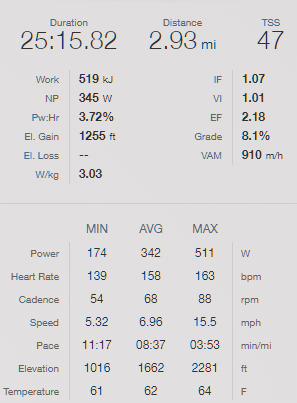
My numbers from the corner to approx. the toll booth
There was the slightest of reprieves while passing the tool booth, and then it was nothing but up, for a section of about 4 miles that featured the steepest sections of the climb. Partway through this section, I took my first hit of maple syrup. It went down smooth and quick, and much easier than energy gel. I also didn’t feel like I had to wash it down with water to clear it out of my mouth. So far so good.
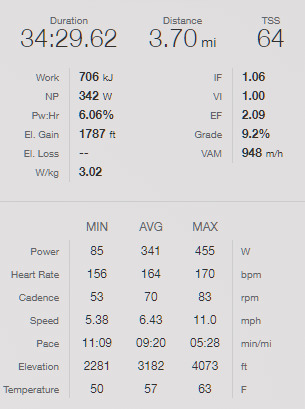
My numbers from the toll booth to the first switchback
Because of how the road is laid out, I could see the switchbacks quite a ways before I got to them. They were laid out high above me on the side of the mountain. I knew that they were only a couple of short miles away, so it was a bit daunting to consider how high I had to climb in order to reach them, especially knowing the gradient it would take.
My legs were doing okay, but started to get a little crampy and uncomfortable at around mile 8 or so. Originally I had intended to ride a bit easier until this point, and then put the power down. As it turned out, I rode a rather more consistent power output, so I didn’t have a whole lot of reserves to draw from. I was going steady, though, so I figured I’d just keep on with my 340 watts and see how that worked out.
By the time I reached the first switchback, I had enjoyed some amazing views, passed two unicyclists, hit my second dose of maple syrup (so good), seen a guy riding deliberately crosswise across the road repeatedly (to rest his legs, I guess?), gotten slightly annoyed by someone with a squeaky bike that I couldn’t drop, and been told “I like that gear you’re in.” As in, complimenting me on my specific choice of gearing. At that moment. I guess? I still haven’t figured that one out.
I knew from simulating the ride indoors that the switchbacks provided some measure of relief, and were the time to drop the hammer for sure, if there was any hammer left to drop. I latched on to the wheel of a guy about my size, who I had noticed from his bib that he was also in the Clydesdale division like me, and followed him up and around the second switchback. Then I went by him and made for the finish.

Making my move
I had enough legs left to put down a sprint for the finish of about 0:20. It was completely unnecessary, and nobody was sprinting with me, but I don’t get to race in bike races very often, so it felt right. It was an experience I had never had, and I wanted to go for it.

Sprint to the line. Note the significant drop in temperature.
Still recovering from my sprint
After I got through the chute and received my finisher’s medal, I pedaled around the courtyard of the little castle-like structure that is at the summit to behold a magnificent view of the surrounding landscape. It was a great reward for doing the work to climb to the top. I took a couple of quick photos and then went back to the finish line to cheer on Phil, who was only minutes behind me. I managed to get a decent video of him crossing the line. We took a few more shots and drank some Gatorade, then put on our sleeves and started the ride back down. It was getting cold quickly so we didn’t spend a lot of time up top.
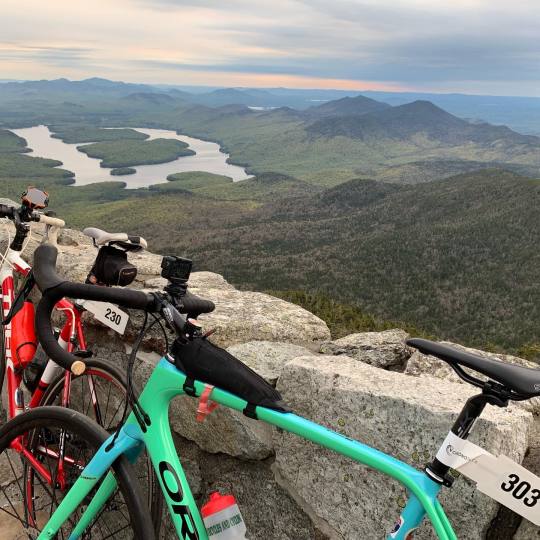

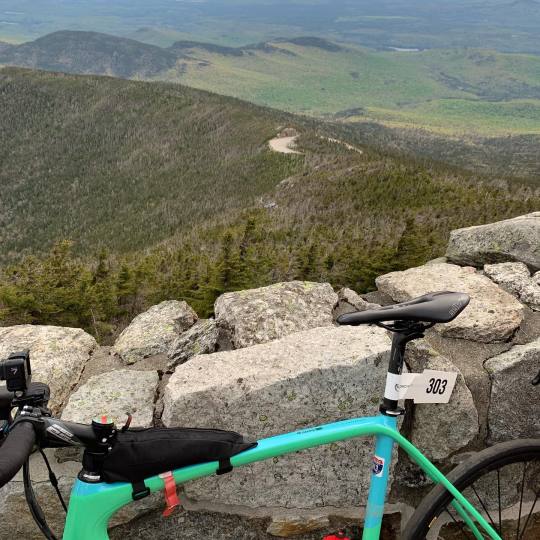
The first switchback, seen from the summit
The ride down was at once fun, beautiful, exciting and harrowing. We were cruising at 40 mph with our brakes engaged. If we had been alone on the mountain, we probably would have let it rip a little more, but there were still people climbing the hill, cars driving up and down both ways, and other cyclists heading down. With a lot of blind corners, it didn’t seem prudent to be going full speed with no chance to stop suddenly if necessary. It was also really cold, and I had to adjust my hands and arms periodically just to make sure that I could, in fact, still feel them.
We made it down safe and sound, and then cruised back to the ski area for food and to check out the results. I ended up in 7th out of 26th in the Clydesdale division (190 lbs+), with an official recorded time of 1:19:25. I was pretty darn happy with that effort. I don’t know that I could have done it much faster if I had changed anything, and I don’t know what I could have changed. It was pretty close to the best execution I could manage on the day. You can’t ask for much more than that.
The drive home was long and dark, but still a good time and there was plenty to recount and reflect on from the day.
I was very glad to be able to do this race. It’s one that I don’t think I will ever forget.
from WordPress http://bit.ly/2Mx3U56 via IFTTT
3 notes
·
View notes
Text
73. DREAMS come true
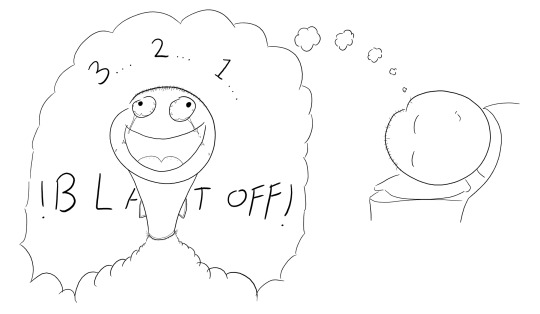
3... 2... 1... Blast Off! And the drawing’s Done. I’m most of all happy with how fast I doodled it out using Microsoft’s free ‘Notebook’ drawing/writing software on my Tablet, and that’s truly down to the app’s accessibility. Could I have used more powerful sketching software? Yes. Would it have resulted in a better drawing? Probably. But trying to juggle layers in Sketchbook or fight with the insufferable clunkiness of Photoshop is just something I don’t enjoy facing, and so I’ll stick to my quick simple doodles. And I’m happy with that.
Because making it all result oriented can sometimes destroy the enjoyment of the process, (not that I’m saying a result isn’t important, rather the journey is equally crucial) and I openly admit that I sketch away on Notebook because I enjoy it for many of the same reasons I adore writing: It’s the fastest way to get my ideas down.
Throughout my entire childhood, my imagination was fast and fickle, Ideas rushing in faster than I could output them, which resulted in a short attention span on any projects that took longer than, well, a sit-down. And so when a tool pops up that allows me to get ideas down faster, which potentially cuts out that “Photoshop” middleman, it ALWAYS draws my attention, especially if it yields the same high-end results.
But, as a filmmaker who wants to dabble in music, Game design and anything and everything, these tools seldom pop up. Sure, everything’s most certainly become more user-friendly, especially with such game engines like ‘Unity’ and ‘Unreal 4′ now becoming freely accessible, cutting out a lot of Dev. time/hurdles. But these advancements have never articulated in the form of tools that make animating, game design, music and everything in-between feel as intuitive as the sketch I did above on my Tablet or the essay I’m plonking out on my keyboard as we speak (or read).
Until recently, most notably announcements of an upcoming Tool made at the last Electronic Entertainment Expo (E3).
But let us jump back a moment for there’s an origin to this great new tool; an earlier iteration that’s celebrating it’s Ten-year anniversary right now, a birthday I’m personally celebrating with the way it changed games/creativity forever. I know that sounds hyperbole, but trust me when I say this comes from the most Sincere place in my heart, a heart that yearned throughout my entire childhood as I stuck together simple stick men levels in Alien Hominid (Ps2, 2004) or laid out cookie cutter racetracks in RC Revenge Pro (Ps2, 2000) for the game I speak of next brought that childlike wonder back into my heart. I’m speaking of the warm, fuzzy, ambitious and very successful:

Released Ten years ago by Media Molecule (also known as Mm), a small team compiled of such visionaries like Alex Evans and Mark Healy which was founded in 2006*, their first outing on Ps3 from a distance looks like a simple fabric styled platformer. But sown (excuse the pun) deep into the fabric (sorry) of its very roots were creative ideas that grew larger than life.
* 2006 also being the year they released ‘Rag Doll Kung Fu’ which was the first third-party game to be distributed on Steam. Their progressive thinking was there from the start.
The articulation of these ideologies can be best expressed through Mark Healy’s early foray into game development when he programmed titles for the Commodore 64 (Console, 1982, also known as C64). The C64 was the Guinness Record champion for most units sold at 10-17 million units, a record laid to rest with future consoles such as PS2 hitting over 155 Million. Yet, in recent interviews, Mark has spoken of those open source tools that allowed him to create with relative ease, and how as future consoles rolled out into people's homes which ended up selling more and more with each passing generation, that accessibility to create was lost. I mention the word ‘accessibility’ like a broken record because that’s the very word Media Molecule seem to have as their unofficial modus operandi. It’s their very soul!
And it was this very soul that was poured into their 2008 juggernaut, Little Big Planet (Also known as LBP), which was teased far earlier than it’s release (to my impatient frustration); I saw the announcement perhaps a year before, the game post-phoned, but I had a taste of the potential and it was the only thing my heart called out for every day leading up to its release*. Finally, a game that gave me the tools to make my very own games.
* This part was actually true. Extreme? Sure, but I was stuck on an Farm growing up so it was the light in my tunnel.
The Puzzle Platformer’s official slogan was “Play, Create, Share”, basically boiling down to a Gaming Youtube with the tools ready built in. Here’s a cute 10-year-old trailer that best expressed this warm fun collaborative charm and it’s progressive stance on creativity (as well as one of the funkiest Game soundtracks from recent memory). You could make levels with ease, publish, get “views” (in this case, plays) and “likes” (expressed through Hearts) and then surf Mm’s servers to play other's creations. The first worry expressed by Critic’s was that no one would want to make levels, but Youtube as a creative platform was already the monolith of proof that this was not the case; people wanted creative output, and once the game was released with Metacritic scores averaging around 95% the Game sold well and the coMmunity was born.
The creative tools were easy to grasp but hard to master, the layers of ways to utilise them for more complicated contraptions and professionally polished levels took time to learn; fumbling around to mediocre results might draw you to the conclusion that quality couldn’t be obtained, but Mm cleverly put those anxieties to rest by including a campaign that was built exclusively with those very same tools. You had no excuse apart from “lack of practice”, and this pushed the coMmunity to make all kinds of contraptions from Mm’s physics-based engine, including someone building a fully functioning Calculator (the Creator even allowing you to fly around Jet-pack style to see how complicated the mechanisms were; turns out, very).
LBP 2 built on that success, implementing a new refined tool called ‘Logic’ (among other improvements) which was an array of different microchips with simple functions that could be wired together to essentially ‘code’ objects to do your bidding. It was deceptively simple and never bogged down the ease that was at the heart of LBP’s Creative tool-set. The step up between games showed up past ‘peak’ coMmunity created inventions (namely the previously mentioned calculator) as bare-bones in what you could achieve with this new instalment.
I poured hours into these games, playing every LBP sequel; the future iterations were handled well by Sumo Digital (LBP 3) and Tarsier Studios, Double Eleven and XDev (LBP Vita). Mm also produced the Bafta-winning Vita/Ps4 Tearaway which I’m part way through now, enjoying endlessly in an attempt to fill the void till their next highly anticipated game.
For once again they’ve teased a pipeline title which the public await with bated breath; their next instalment in their Creative franchise (and the very reason I’m writing this article) doesn’t just build on their previous efforts of community-based tools but fully realises them. They finally made what I and many others have always wanted, a Gaming engine with the ease of drawing; a level creator that’s as simple as me typing on this keyboard; the true Youtube of gaming:

I love the LBP franchise a whole lot (still play it now), but whatever I built always felt a construct of ‘LBP’; the most approachable expressive tools I’ve ever used still restricted by the 2.5D realm of Sackboy’s recognisably cloth based world, and while you could creatively open up the borders to reveal new perspectives and ways to make games there was always the nagging feeling that you weren’t truly making YOUR game, you were making a game for Mm. This wasn’t their fault, and it’s not like you could point at any other accessible tool to exemplify these faults, because Mm was leading the charge, and still are. But this upcoming release of their new title aptly named Dreams (Beta 2018, full release TBA) shows with ease that Mm doesn’t just continue to lead this push forward, but are doing so with such an extent as to potentially shake up the gaming industry; for you truly are now making YOUR game.
Strong words are easily backed up with results I’ll show further down, but the final hurdle on their next instalment’s success isn’t just the quality or function of the final output (which Mm shows with confidence on their near-weekly streams and collaborations with other gaming developers via Twitch/Youtube) but with how the market will react to it, or if they even will react at all considering a relatively quiet reception in the wake of AAA games like Red Dead 2 and other heavyweights.
But before we discuss that further, speaking of a game like this with mere words doesn’t really do Dreams justice. I’ve watched nearly every video they’ve released across this last year so here are, in my opinion, the videos that best exemplify what their upcoming game/tool has to offer:
Trailer (TGA 2017 Trailer), which is the shortest of the bunch, quickly highlighting the general feel and look of Dreams.
Game Informer’s playthrough of campaign levels, which is fantastically demoed by Veteran Mm founder and C64 programmer Mark Healey.
A run through of fun bite-sized levels made by their team, showing off the astounding variety and how each level flows into the next like a Youtube playlist.
And should you choose to watch only one of these videos, choose this next one; Game Informer’s Rapid-Fire Q sesh (with other Mm Founder Alex Evans), which isn’t just informative but should also be commended as creative and engaging journalism at it’s finest, running at the speed of a scripted TomSka Sketch* (It should be noted that Game Informer has been hitting it out of the park over the last month with their fun and insightful cover of Dreams).
* ’TomSka’: a popular Youtuber, famous for the ASDF Cartoon sketches and his fast and frentic comedic sketches. He’s done much, and with such a consistently recognisable style and tone across all projects it could be argued he’s an auteur, which excites me greatly that Youtube can own such a phrase and that ‘auteur’ could also translate to the users on Dreams (the platform I indulgently want to be referenced coining the term ‘Youtube of Gaming’. I’ll stop saying it when everyone else starts.)
TL;DR to sum up those clips: Dream’s works. Not just in regards to it building on LBP in every conceivable way (especially in being fully 3 dimensional) but also being easier to use, with motion controls utilised to essentially free-mould the level around you, and the jump between creative and playing being even more seamless; I was previously going to link three individual videos, title-ing them ‘PLAY’, ‘CREATE’ and ‘SHARE’ respectively, knowing there are such videos that focus on each aspect out there (shown at this year’s E3), but the Videos linked above demonstrate far clearer how the boundaries between those three different worlds are getting harder and harder to define; less “Play, create, share” and more “placrehare”... which isn’t as catchy but you get the idea.

Above: Picture of the Mm Team taken by Game Informer during their visit.
Everything about this game covers all aspects of game creation, even in terms of building a CV the defines your best skills (Animator, Modeler, Musician etc.) and then allowing you to allocate different roles to different creators (if you so wish). Objects/characters/music/levels etc. can be shared and remixed, creating a library of never-ending stock objects which either help fill in your weaknesses or set up a foundation to build on. Everything is built around a coMmunity which is so heartwarming considering an industry which, much like the film industry, is very clicky and “who you know”.
To prove how Mm appose this, and help highlight their deep-set sincerity, online creators from some of the finest levels on LBP were later hired by Mm to work in their company on future projects based on how well they grasped the tools. Mm recognised them for their talents and allowed these artists to flourish, artists who may have never broken into their dream profession without that much-needed step up.
This harks back to that phrase I’m trying to coin: “A Youtube of Gaming”. Film-making has gotten far more approachable over the last 10 years with equipment becoming progressively more affordable and every PC/MAC coming pre-loaded with editing software. The ability to share with ease online has helped many Video creators land roles in the industry or even create their own*.
* Youtube channels FreddieW (now named Rocketjump) and Corridor Digital (founded by Niko and Sam) springing to mind; their effects driven action/comedic shorts is what made many even consider film-making as an option (they even put out free tutorials/BTS) and their channels frequently collaborate with each other, other channels and even known names (Smosh, Key and Peele, and Jimmy Kimmel to name a few).
And so this is what makes Dreams so special; a chance to lower down the industries’ impenetrable defences and highlight player’s hidden talents with a tool that’s grown beyond ‘making levels for Mm’s games’ and matured (while retaining its essential charm) into a fully fledged game engine*.
* Many of you might think I’m counting eggs before they’ve hatched; understandable, but even if the game came out as a mere shadow of it’s intentions (which at this lately developed stage I doubt considering their showcases), the idea is already there. With VR and motion controls improving across all platforms there will doubtlessly be an imitator who can pick up where they left, improving from their failures. Failures I believe unlikely due to Mm’s track record of achievement and future support (they’re very involved with their CoMmunity, hence why I’ve placed a Mm in every use of the word CoMmunity (not my idea btw, Mm do this themselves)).
But more importantly than this future engine’s apparent depth is it’s accessibility, which cleans the slate of any straight up coding (LBP’s ’Logic’ is still there in spirit), rubs away clunky creation and puts all the tools under one roof with a platform to share and collaborate on. An infinite world of infinite creations that you can join your friends to play, Sofa sharing or online, streaming through playlists or creating, new content or remixed, in infinite combinations with infinite flexibility with an accessibility that has been unheard of until this game/engine.

Above: Front Cover Mm did for Game Informer’s November issue, which was created entirely within Dreams.
Which brings me to why I’m writing this article. I’m not writing extensively of the tools you can use, I’m linking other journalists’ work and mostly speaking of Mm’s past and what their new game could mean; so what’s the function of this? Well, as mentioned earlier, their success on something so CoMmunity led will be based on how the CoMmunity utilise it, which first and foremost means they need a CoMmunity to start with. And as also mentioned earlier, I think the reception for this game is relatively quiet compared to larger AAA games; this feels wrong to me in so many ways, as Dreams with the right support could literally shake up the gaming industry and influx a new wave of creative talent, showcasing an entourage of new ideas; a French New Wave of Games but, well, British (at least in origin). And I want this to be heard. I’m writing this article because I want to support them, in an attempt to build awareness. Because I want them to succeed. For their success will change so much in so many innovative ways.
When I saw all this beautiful creative potential oozing from their E3 trailers earlier this year something inside me changed. It wasn’t a new feeling, not at all, rather a familiar one; one I missed. It was that childlike wonder I had so long ago; that awe and glee when I watched the announcement trailer for LBP; the many days I sat scribbling and doodling on the floor as a child in those long stretched out Summer holidays; those 3 hour long GCSE English Language exams where I would write out whatever story popped into my head (honestly, only exam I ever enjoyed). Those are some of the happiest days of my life: pure unchained creativity with seamless tools.
Finally, those days are returning. Finally, I can be a child once more. And hopefully, so can you <3
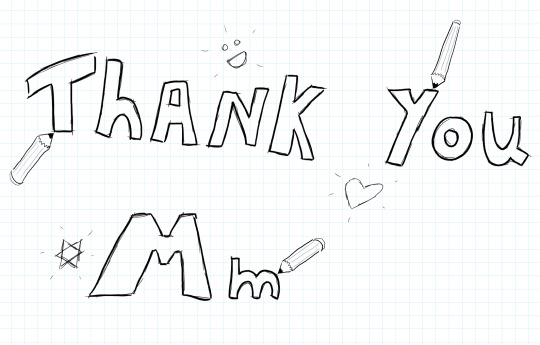
#blog#blogger#news#writer#writing#gaming#gamer#game#2018#Dreams#media molecule#playstation#ps4#LittleBigPlanet#little big planet#Mm#Future#Potato#writerblr#writers on tumblr#E3
9 notes
·
View notes
Photo




Process of final output:
To start off I went into overwatch and copied out into a spread sheet my play time for each character I played. I then screen shot this data as well as each character has a bar that shows the play time as well with a specific colour assigned to it. I then opened this screen shot up in photoshop and used the eye drop tool to get the hex code for each of these colours which was then put into the spread sheet. Next I copied the data set into an array in processing. The hours played was used to determine the amplitude of the oscillating dots and the colour simply effected the colour of the dots. I only played around with one axis as it started to get a little too maths based for me and I was happy with the result I was getting as a base to take into photoshop. One problem I ran into that I couldn’t fix was since I needed to get individual images of each character I needed to run the code multiple times each time changing the three values I have left bold in the code below. This took time as the code itself draws the occulting dots over time. On top of this since it was time based and required bits outside of the draw function I couldn’t use the simple beginRecord endRecord so I had to save a png instead. This was ok as I kept the final output small and just duplicated the image to increase it’s length when in photoshop however it did reduce the options I had when in photoshop. When I did get to photoshop I simply created one vertical and one horizontal line of each of my top 5 most played characters as I quickly found that doing all 32 was too much and I wanted to simplify the posters. Also the top 5 most played had the most visually interesting outputs in my opinion. I then played around with the layering order of these oscillating dots until I was happy. I chose not to get rid of the backgrounds as I wanted to avoid the clutter this would introduce to the poster. I then added another visual representation in the form of circles this time also accompanied by the actual value of hours played of each character. I could have done this with code but decided that there wasn’t much point as I could do it way quicker in photoshop and it would allow for easier layout iteration. I also added the names of the characters again to add just a bit more information and to balance out the layout. I also included the date of when I got the data which I kept simply to OCT 2021 as I found that the best balance between what looked good and gave enough information. Lastly I added two horizontal lines to add some more balance to the composition and to create these columns where the information sits.
For the printing I originally planed to print A3 until it was pointed out to me that if I wanted this to be like other posters it should be A2 at the least. I tried to print if A2 after this however I ended up not having time as I had planed when the photoshop part of the process would be done around the assumption that I would be printing it myself which requires less time. I did however make sure to use above average GSM paper to give it a more quality feel and look.
Code:
int[] hours = {196, 55, 51, 46, 41, 26, 23, 21, 19, 16, 15, 14, 12, 11, 8, 8, 7, 6, 6, 5, 5, 4, 3, 3, 3, 2, 2, 2, 2, 2, 1, 1}; color[] shade = {#f8eebf, #6f8bb4, #c1b989, #f582ba, #b85557, #87d24b, #a064a8, #3b8435, #8a95a0, #d48934, #af7f45, #f993ca, #3878ca, #faee7e, #f6c24b, #905e56, #9bf73a, #697293, #9f9fbb, #93c5f8, #47aaca, #b86564, #7c8f75, #874d43, #6eaff3, #686766, #93c4d5, #80364a, #966be9, #6b4ab8, #d88834, #8a96a1};
float t;
void setup() {
size(1191, 841);
background(20);
}
void draw() {
for(int i = 0; i < hours.length; i = i+1){
stroke(shade[0]);
}
strokeWeight(5);
translate(0, height/2);
point(x(t), y(t));
t++;
}
void keyPressed() {
saveFrame("OW_equation_0.png");
}
float x(float t) {
return t;
}
float y(float t) {
return sin(t / 10) * (hours[0]*2);
}
1 note
·
View note
Text
Geogebra to Cake in Five Steps


In the Aperiodical’s Big Internet Math-Off 2019, Becky Warren posted an entry about Geogebra’s ‘reflect object in circle’ tool (it’s the second article in the post). I enjoyed playing with the tool and, after making a few colourful designs, it occurred to me that one of them would make a great cake for the MathsJam bake-off. It would only work if the curves were accurate; sadly this would be beyond my drawing abilities, and definitely beyond my piping abilities. But with some help from 3D printing I thought I might be able to manage it.
Here are the steps I used to transfer the design to a cake.
Step 1 (Geogebra) – Save as an image
I started by simplifying the design. Squares are straightforward, so I only needed the part within the centre circle. I hid all the squares and removed all the colours, then thickened the lines to make them easier to see. Finally, I took a screenshot and saved it as a bitmap image.
Step 2 (Inkscape) – Convert image to path and generate scad
The next step was to use Inkscape to convert the image into an OpenSCAD file that can be used for 3D printing. If you google ‘Inkscape OpenSCAD’ you’ll find several extensions that will do this; I used Paths2OpenSCAD.
To generate the scad, start by importing the image into Inkscape. Then, with the image selected, go to Path > Trace Bitmap. This opens up a window with lots of options; accept the default and click OK, then close the window. Inkscape has now converted the image into a vector path; this means that it has coordinates for each point on the path.
Now go to Extensions > Generate from Path > Paths to OpenSCAD. This opens up another window. In the output file box, enter the location to save the scad file, then click OK. Now you can open the file in OpenSCAD.
Step 3 (OpenSCAD) – Scale design
The generated OpenSCAD file starts like this.
It has a method called ‘poly_path854’ (a new number is generated for each file). This method uses the coordinates of the points on the path from Inkscape to make a polygon in OpenSCAD.
Pressing F5 to preview shows a replica of the image, rendered as a 3D model.
At the very end of the file is a line that calls the ‘poly_path854’ method, passing in a number. The number is the height of the object when printed – you can change this to suit your needs.
The part that I found difficult was to work out the size the model would be when it was printed. The axes on the OpenSCAD preview window give some indication, but it’s not possible to read accurate values from it. I wanted my model sized appropriately to match a square cutter that I already owned. In the end, I printed out a 1 mm high model so that I could measure the original size without wasting too much plastic, then I scaled the entire model to match the square cutter. The final line of the file became
scale([6/(4.2*sqrt(2)),6/(4.2*sqrt(2)),1]){ poly_path854(5); }
Step 4 – Print
I sent the model to the printer, and a few hours later I had my cutter!
Step 5 – Imprint on cake
Once I had baked the cake and covered it in fondant, I used the cutter to make an imprint of the design on the icing.
Now it only remained to cut the squares around the edges and give it some colour. I used a small amount of vodka to thin out paste food colouring so that I could paint on the fondant icing. (Honestly, it was a tiny amount of vodka – less than 5 ml over the entire cake.)
That’s it! Geogebra to cake in five steps. Here’s the finished cake, alongside the original design in Geogebra.


from The Aperiodical https://ift.tt/37KqkG7
from Blogger https://ift.tt/2S4Ss06
0 notes
Text
Week 3: Three.js
Code 1:

This code was made using Three.js, this is an easier coding process for me. It gives instructions where to place a piece of code which means I’m able to make something cooler and faster than processor. Three.js has options of code to place that create a different output from the chosen code. I created a knot and coded it to move around the width of the screen at a medium pace. The knot added layers every time it moved and spun in a direction making it drag its shape across the screen leaving a trail of colours. I think this looks pretty and is very pleasing to me.
Code 2:



I made this code using Three.js, this was a cube that I stretched out to make longer and used the snippet rotate. I rotated it at a faster speed and different speeds to make the Cube rotate at different times and speed to make if off centred and leave a cool trail behind. This code looks pretty as I used the ‘normal’ mesh which was bright and colourful. This code leaves a trail of the last position before moving on and on leaving a background for the next layer to proceed drawing on top of it. I think that it creates an interesting pattern and its cool to see it overlap that last rotations. Because of its length it has not stayed with a certain space and has gone outside of the area where it would seem to stay in. I coded the y axis slower than the X and Z because I wanted some sides to spin faster than others to create an off centred pattern.
After leaving my code to run for several hours it had so many layers underneath it it became a more defined shape.
Code 3:


For this code I placed a knot and added two snippets to it. First being the ‘rotate mesh’, This rotated the knot at different speeds to produce a random pattern. One axis moving faster for longer and the other being the same speed for a shorter amount of time. This made the knot repeat its pattern in a satisfying way. I changed the camera angle by adding a snippet ‘keep camera focused on mesh’ this made the camera look like its going over top of the knot and back down to eye level. This added a cool effect to seem like you are moving or following the object.
Code 4:

This code I made by just using the snippet alone ‘create particles’ this is a quick code that took me forever to finally get working. It is particles rotating and changing to random colours but looks really cool.
0 notes
Text
Interview series - What after B.Arch? #11
Interviewee: Ar. Kedar S. Undale
Post-graduation: Master in Advanced Architecture | Institute for Advanced Architecture of Catalonia (IAAC)
What prompted you to take up this particular program?
Computational Design and Digital Fabrication.
As a student of architecture, I was always fascinated with organic architecture and architecture with complex geometries. Luckily, in my undergraduate campus design studio, I had the opportunity to explore this fascination and was first exposed to the term “Parametricism”. I fell in love with this style of architecture. So, for my internships, I looked for firms in India that were working close to this space and after that, it was clear to me that I lacked the skills and understanding to pursue this style of architecture. That’s when I decided I need to pursue a Master’s degree in this area.
While researching for schools, I realized that parametric architecture had largely redirected into computational design and digital fabrication. So, I shifted my lens a little bit, and that’s when I came across the Institute for Advanced Architecture of Catalonia in Barcelona. IAAC has an excellent online documentation of their current students’ and alumni work and it was evident that a lot of computational design and digital fabrication was involved.
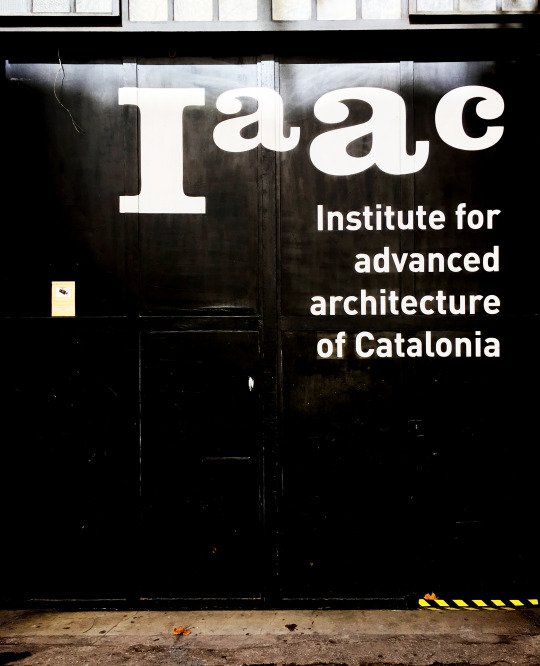
IAAC Gateway
What about the school/program appeal to you?
Apart from the specializations they offered, I had two other reasons for choosing IAAC.
1. The faculty at IAAC came from different disciplines, like architects, interaction designers, computational designers, physicists, programmers, urbanists etc. To be able to learn architecture not just from architects’ points of view but from these diverse perspectives coming from distinct backgrounds was fascinating.
2. Thirty percent of my decision was based on the location. Barcelona is one of the best cities for architecture lovers and I couldn’t agree more. Being able to find inspiration from two of my most favourite buildings - Barcelona Pavilion and Sagrada Familia was like hitting two targets with one shot.
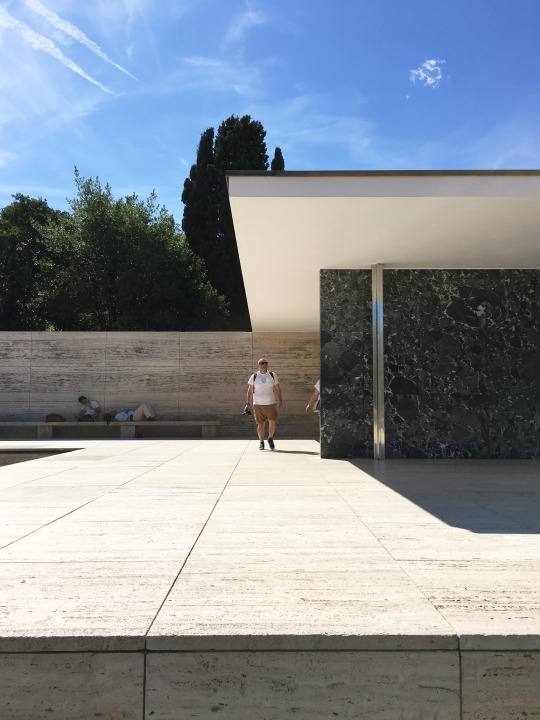
Barcelona Pavilion by Ar. Mies van der Rohe ��
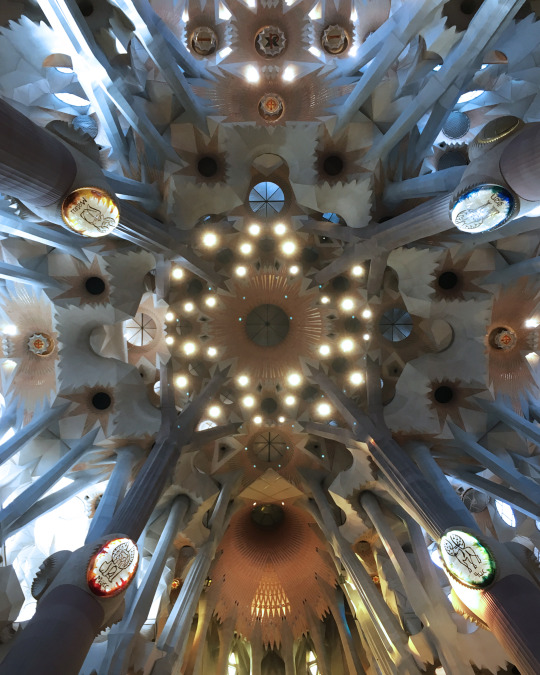
Ceiling of Sagrada Familia by Ar. Antoni Gaudi
Do you think it’s important to work before taking up master’s study?
I think it depends from person to person. Since I wanted to know more about parametric design, internship felt like an obvious decision to me before diving in. But, I think if you are very clear about what field you want to do Masters in, then you should just go for it.
When did you start with the application process considering the time for application, scholarship/bursary deadlines, etc.?
It was around June 2016 (more than a year before my course started) when I started my application process. I had to prepare all the documents, make my portfolio, resume, Statement of Purpose and Letters of Recommendation. I would say one should start the application process at least 12-18 months before the course starts.
What preparation did you do before starting master’s?
Before going for Masters, I tried to keep my knowledge on computational design constantly updated. I also spoke with an alumni to get a sense of life at IAAC and Barcelona. Before my selection, I had a skype interview. I took this opportunity to ask the admissions officers any doubts I had about the program and the city. I was able to take a firmer decision this way.
Did you have to give any entrance tests? How did you plan for them?
Although the course was taught in English, IAAC didn’t have any language entrance exams. This made the course accessible to bilingual or multilingual students.
How long was your program?
My program was MAA01, which was a ten-month long course. I chose to attend the pre-course offering in September before we officially started in October 2017 and finished in June 2018. The precourse prepped us on Rhino, Adobe After Effects, Premiere Pro and gave us a basic introduction to fabrication techniques.
Did you have post-masters plans in mind when you took up masters? Or did you go with the flow?
No. I just wanted to be in the moment when I was doing the program. Also, I didn’t want to shift my focus from academics and what was happening around me to think about what I would be doing after that.
Did you have to apply for a visa?
The VISA process was a bit tedious for me since there was no Spanish Consulate in my city. But, I was guided a lot by IAAC’s academic personnel. Getting my documents translated into Spanish was another huge task. It was also really hard to find an authorized translator. I ended up finding one in Mumbai.
Once you get to Spain, your visa is valid only for three months. So, you have to apply for a student residency card, which then lets you travel anywhere in Europe. You need to also keep in mind the expiration date of your residency card because mine expired a week after my graduation.
How was the experience at the school?
In two words it was Extremely Intense. I never thought it was going to be so hard. A couple of my classmates even dropped out. I remember during my first semester, I called my mom and told her, I couldn’t do it anymore. Surprisingly, she said okay, which actually gave me the will power to finish the course.
We were a cohort from 60 different countries. It was like being invited to a global multicultural meetup. We celebrated festivals from all the countries, shared cuisines, try to speak each other’s languages. This fraternizing I think, made it a happier and friendlier environment.
The course was ‘taught’ and everything was completely new to me. The fabrication techniques, the studio subjects, the seminars, the electives - all of it. Even the way I thought about architecture changed. I was exposed to how different disciplines co-exist with architecture, and how different tools and machines play a role. Creating architecture from data, for instance, was a mind-boggling experience.

IAAC Family after first semester Digital Fabrication presentation
How was teaching at your school?
I had classes 5 days a week from morning 9am to 6pm for my first semester, the second and third semester I had classes 4 days a week with varied timings. Rather than lectures, each class was more like a discussion. The subjects which required teaching were taught by presentations. They also recorded the lectures, so that even if a student missed something, he/she could see and learn from it later. This also helped students whose primary language was not English.
We had one research studio, two electives, two seminars and one continuous computational design lab. Most of the coursework was divided equally between group work and individual work. We had submissions every single day.
Tell us more about the mentors.
One major break was to not address any faculty as Sir or Ma’am, no matter how senior they were. This small step made it very easy in interacting with them. Apart from being available on email for doubts and such, we also had regular support hours with respective faculty members for two hours a day, so you could meet them personally.
In my second and third term, I was in Self-Sufficient buildings (SSB) studio tutored by my favourite, Enric Ruiz Geli and Mireia Luzarraga. In most architectural schools, the focus is on generating large quantity of presentation sheets, but here, my tutors were asking me to create a single drawing on a lone A1 sheet, which would capture my whole master project. This was my master drawing. The notion that architecture has to be represented in a typical fashion was gone. The master drawing for my proposal was an image output from Processing (a coding language mostly used in the context of visual arts) which showcased the trajectories of bees on my site.
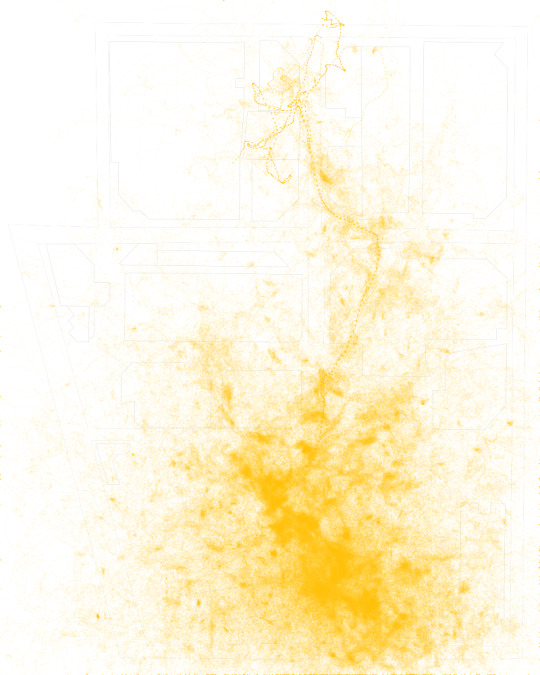
Master Drawing
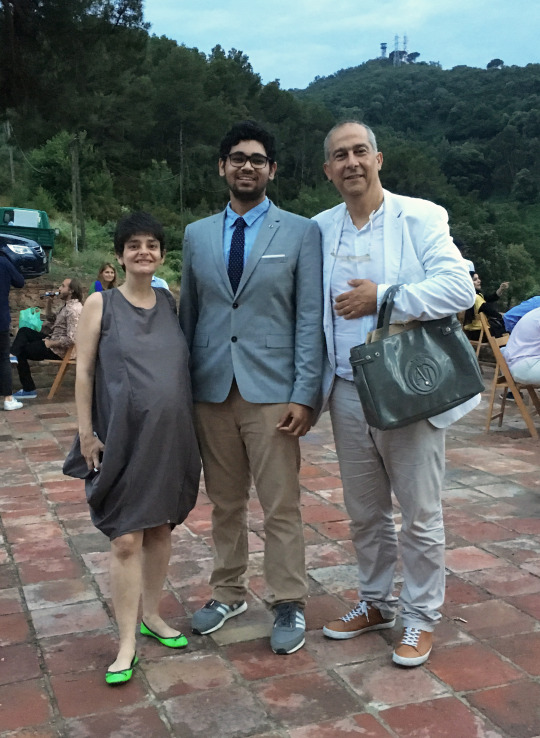
Me, with Mireia and Enric
What kind of support system did your institute/university have in place for international students considering a different learning environment from that of Bachelor’s?
The good thing about IAAC was that people from different disciplines and backgrounds supported and learnt from each other.
Were you involved in research projects/competitions while studying?
I had research electives - one where we researched and designed artefacts for humans in the age of 2050 called ‘Artifacts from the Future’ and another where we found urban fabrics in different cities, which was later compiled into a book titled ‘Urbanisation’.
Could you tell us in brief what your thesis/dissertation/final project was about?
As part of MAA01, I didn’t have a thesis but I had to do a Master Project, which I developed in the Self-Sufficient Buildings studio. We had the studio every Friday from 9:00am to 6:00pm, which included submissions, presentations, personal talks, group discussions planned out over both the terms.
As a class, we chose six blocks of Poblenou in Barcelona to design a co-learning and co-working campus. Each of us chose our own design agendas - mine being Biodiversity. My project was an attempt to increase the biodiversity in these blocks. What started with creating a dataset of different local plants, animals, birds, mammals and other species ended up under a common denominator of pollination. On this site, pollination was carried out by pollinators like bees, ants, hummingbirds, beetles, bats, butterflies etc.
Of these, Bees contributed more than 80% of all crop cultivation. I titled my project ‘(Bee)iodiversity’ with a design aimed at increasing bee population by creating a comfortable and optimum climate for them.
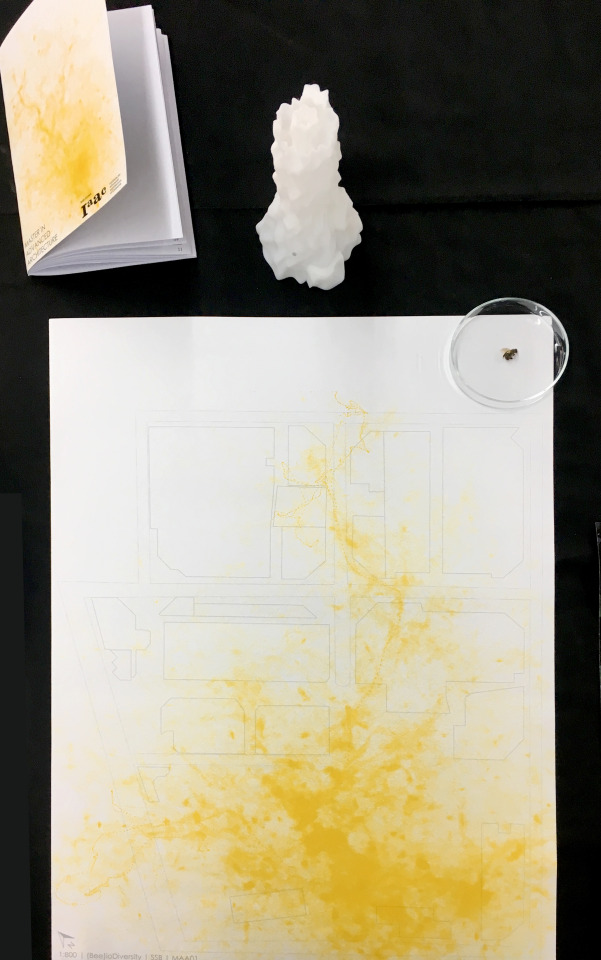
My final presentation material
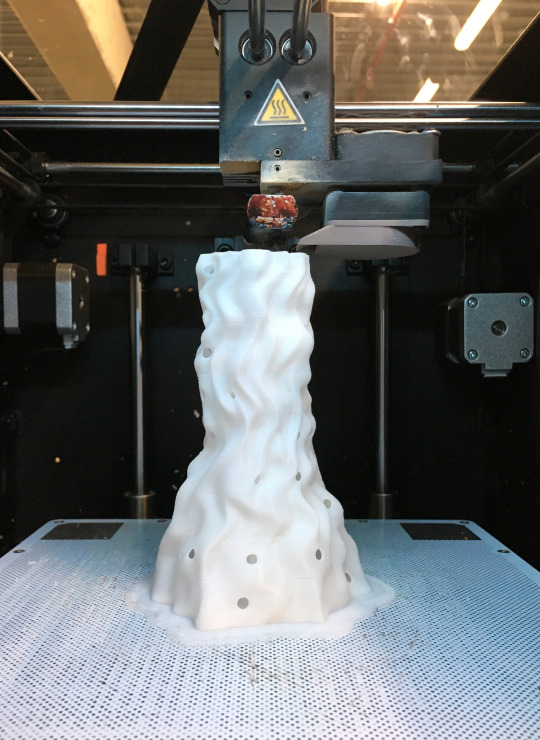
3D printing in action
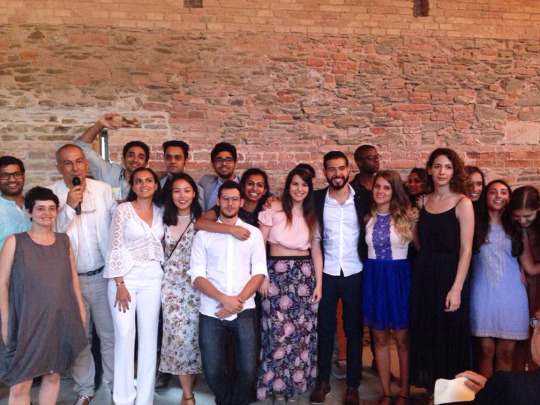
SSB family during graduation
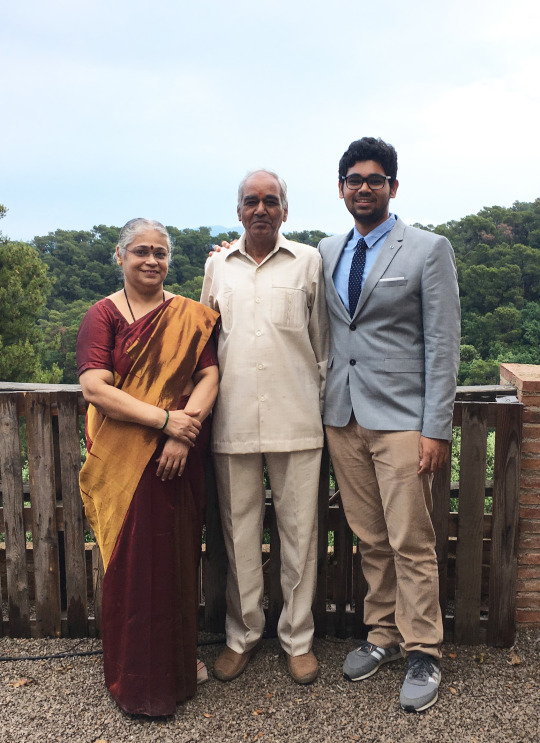
Mom Dad came for my graduation
How did you manage the finances?
All finances were taken care of by my personal family funds and an educational loan.
Did you volunteer/work part-time job/intern while studying?
No. The course was too tightly scheduled to accommodate internships or jobs.
How did you choose your accommodation? Did you have to commute to reach lecture halls?
The first criterion was the cost and the second one was the distance to the campus needed to be walkable. I found two roommates to share an apartment with on IAAC’s online portal for incoming students. Together, we contacted a lot of agencies, AirBnb’s and other students studying in Barcelona. After almost two months of regular search, we found a place and paid them an advance.
Did you travel while/after studying?
I travelled during the two breaks between three semesters. I went to Italy and the United States.
During Christmas 2017, I went to Milan, Italy for five days to visit a friend. It was a relaxed and fun, snow-filled trip. I also visited a ski resort in Sestriere, Lake Como in Lecco and the beautiful stepped streets of Bellagio.

Snow at Sestriere
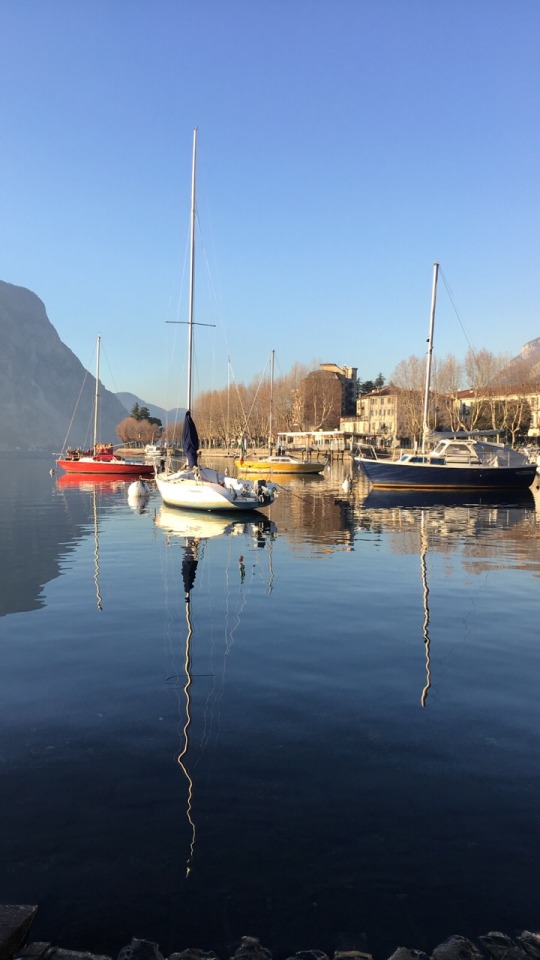
Perfect reflection at Lake Como
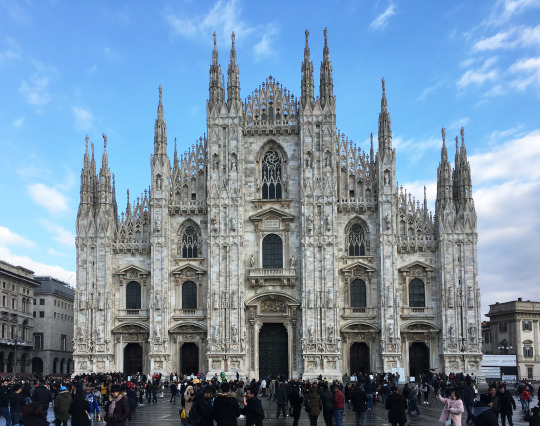
Duomo Di Milano
My next trip was a research trip with my SSB studio for 11 days to USA. This was a hardcore architectural trip.

Beautiful New York skyline at night
We visited New York, Blacksburg, Washington DC and Boston and three universities - Virginia Tech, MIT and Harvard. We actually did a two-day design charrette in Virginia Tech with students from their Masters and senior undergrad students to design a part of their campus. This helped us to exchange design ideas and to see how all of us pursued architecture differently. I also had the fortune of visiting Frank Lloyd Wright’s extraordinary Falling Waters.
You can read more about my travels during Masters on my blog https://medium.com/sliposcopic/welcome-2k19-3aa417555a0d
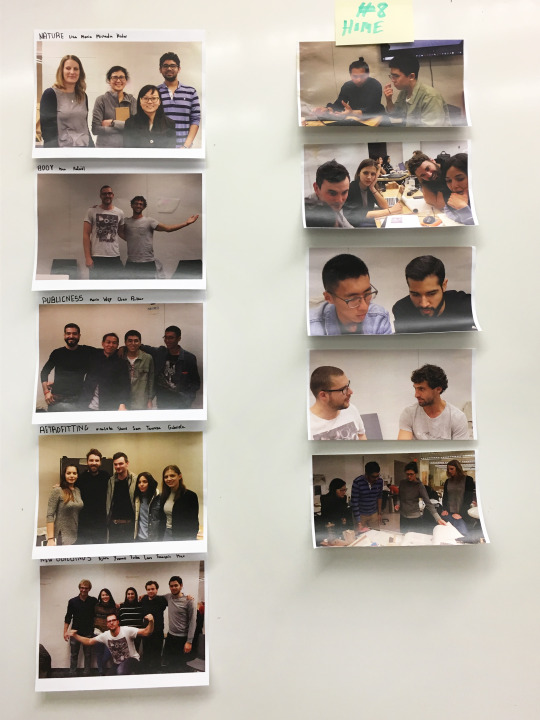
Design Charrette at Virginia Tech
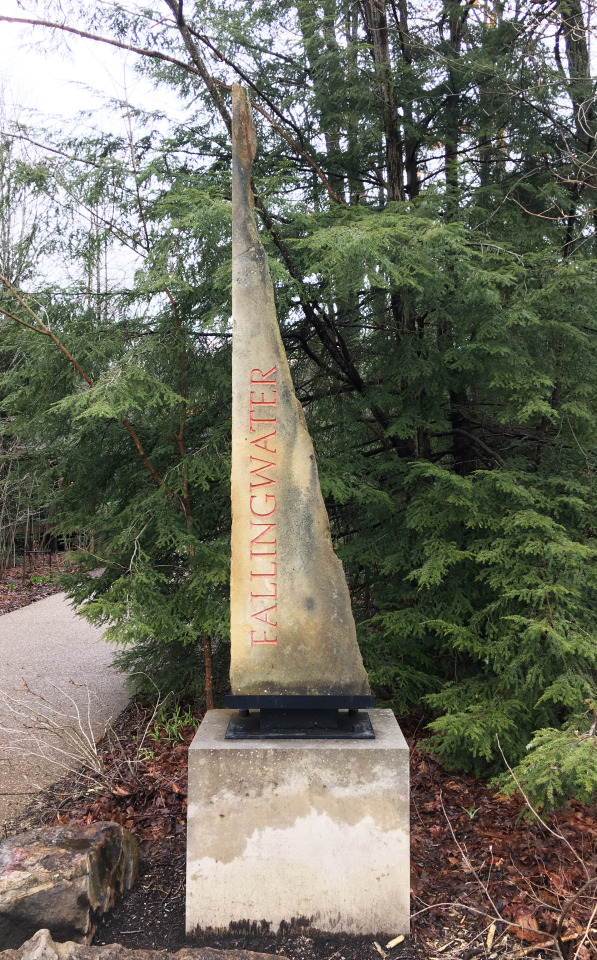
Falling Waters Entrance
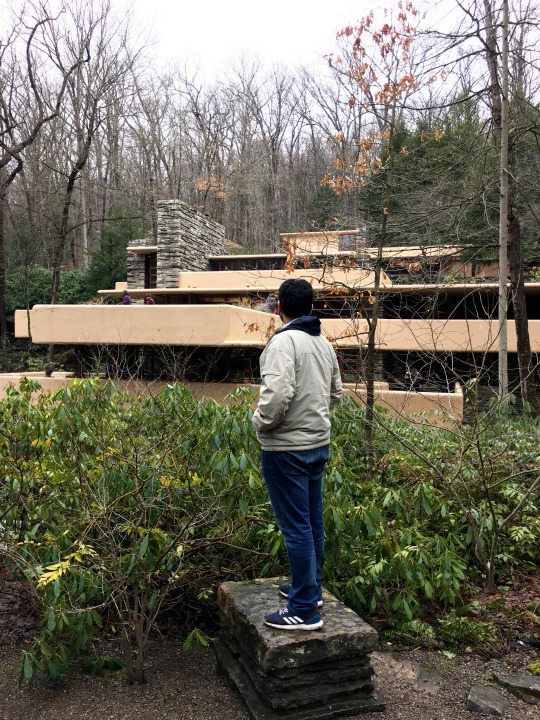
Me bedazzled by Falling Waters
Are there any notable incidents/ anecdotes from post-grad studies that you wish to share?
The trip to the US was a memorable one. We hired two RVs (Recreational Vehicles) in which we lived. Every night, we would pull over to a campground and then sleep in the RV, get ready on the grounds and proceed for the next part of the road trip. Often these campgrounds had semi-covered spaces to hang out and chill.
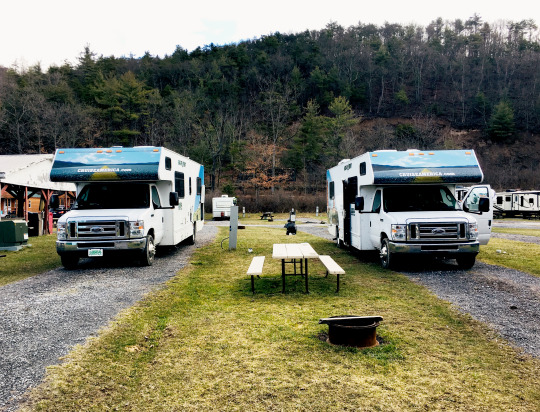
RV’s chilling in campground

Scale comparison I am 6’ 1” ft

White House and its situation across the street
How do you think doing a master’s degree helped you?
One important lesson was understanding how different professions affect architecture, which is contradictory to how the architectural community around us is - being in our own disciplinary shells. For instance, in my SSB studio every week, we had a guest speaker subject expert. They were lawyers, physicists, sound artists, filmmakers and so on. And, we all discussed our projects with them. Almost always, the feedback from them was what you wouldn’t expect.
Apart from having picked up a new technical skill set; I think the course has made me a better architect overall. I would credit this majorly to being in the Self-Sufficient Buildings studio. It has also made me more empathetic towards nature and shed light on pathways for what design philosophy I should follow.
Did the city/country you studied in play a major role during your postgraduate study?
In my opinion, Yes. I think that the city in which you are studying has to inspire you every day to go out and pursue your dreams. I could not imagine IAAC being anywhere in the world other than Barcelona. I could see how the city was adapting in its architecture to all the technological advancements happening there, which were also central to my program.
Also, being surrounded by innovations such as Barcelona Pavilion, Sagrada Familia, Peix(Fish), Torre Glories, Forum building by Herzog & de Meuron gave me that push I need every week to keep going.
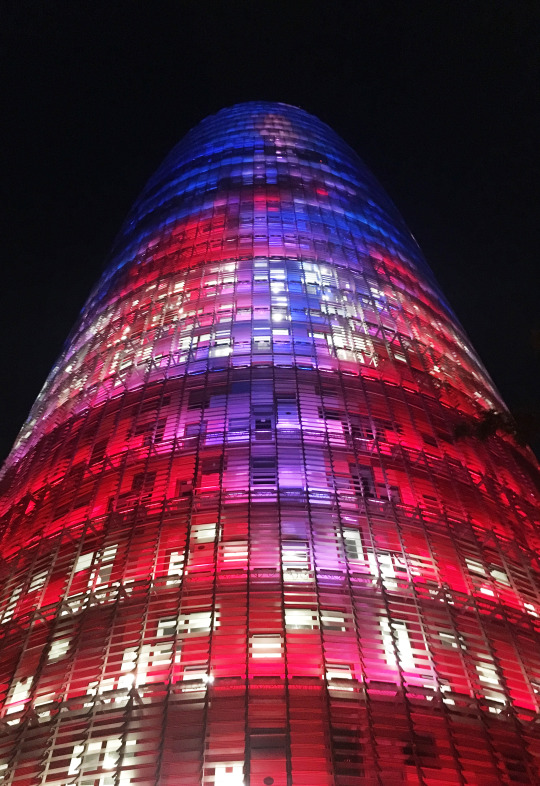
Torre Glories by Ar.Jean Nouvel
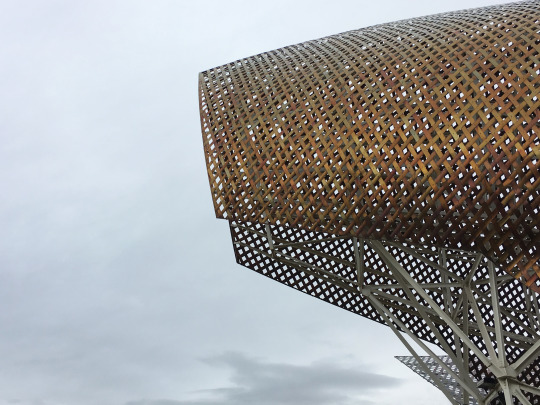
Peix by Ar.Frank Gehry
Could you please tell us about your current work and future plans?
I took a break of six months after the program. It was important for me to keep sharpening the skills I had learnt while figuring out the next steps. In February 2019, I decided to start my own practice - Kedar Undale Design Studio in Belgaum, Karnataka where my focus is on creating self-sufficient spaces using computational design and digital fabrication. I am also actively trying to promote the importance, relevance and advantages of employing Computation in Design work through visual art projects, engaging in conversations and so on.
What message would you like to give to students/professionals planning their Post-graduate studies?
I would suggest every undergrad student do a Master’s degree in whichever field or place he/she is interested in. It could open up a whole new side of the field to you. For people who are already in a postgraduate course, I would suggest them to choose focus on their studies over future, have a lot of fun and try to figure out how you can contribute to the field.
Looking back, was there anything you would have done differently?
Travelling more. I did travel during the holidays but, I wish I had travelled even more to places that were nearby during the weekends.
_____________________________________________________________________
About the interviewee…
Kedar is the principal architect of Kedar Undale Design Studio based in Belgaum, Karnataka. His practice mainly focuses on self-sufficient, computationally generated designs with expertise in generative design, parametric design and digital fabrication.
He graduated with a B.Arch degree from KLS Gogte Institute of Technology, Belgaum in 2015 with the seventh rank at the Visvesvaraya Technological University. He completed internships at Collage Architecture Studio, Bangalore and Cadence Architects, Bangalore. Subsequently, he worked at Thirdspace Architecture Studio in Belgaum, as a Junior Architect and was a visiting faculty for Architectural Design and Graphics at KLS GIT’s Dept of Architecture.
You can check out his work at kedarundale.com and contact him at [email protected]
Kedar regularly posts his work in Computational Design on his Instagram page @undalekedar
_____________________________________________________________________
I thank the entire Doodle Dialogue team for inviting me for their interview series. This initiative for sharing first-hand information from graduate students for those aspiring for higher education is a significant one. Kudos to you girls for doing this amazing work!
#Architecture#architecture students#architecturestudent#architecturestudents#@architecture#Architects#m.arch#postgraduation#Post Graduation#postgraduate#higherstudies#barcelona#spain#india#interview#computational design#digital fabrication#master in advanced architecture#institute for advanced architecture of catalonia (iaac)
0 notes
Text
Sunday, March 27th, 2017
Was gonna start at around 8pm today. After spending like 3-4 hours on the first entry yesterday, I definitely wanted to start earlier. Alas, I was too tired and slept some more but now I'm awake so I'm hoping to just focus and write my lovely scrambles.
Got lots of good reactions to my first entry yesterday. I have three versions of this now but I want to do a project to make a just personal website (not with my overdue website).
Nurse just came in! Done for tonight! No random interaction sayings for tonight. Sad. :(
Daddy about to sleep. Love him <3
Today. Long yet short. It's weird. I'm trying to think of things to say but it's such a blur from sleeping on and off.
It's a weird kinda feeling. When you sleep on and off all day, it just feels like a dream. Everything's faded, foggy.
So today, I woke up. Lol. Such a boring being.
Well, really I didn't wake up. I actually was awake all night. Stupid awake brain. I wouldn't stop thinking all night. Tried EVERYTHING. No electronics. Watching a show. Reading an article. Then I made the mistake. I opened my computer and started working. I was obsessed with trying to format a blog online (which would have been fine to just do over a few days). You can actually tell I was awake from all of my posts on Facebook. Then, there was this thing on Facebook I was trying to fix. I wanted my link in my post to show in the link preview box thingy so it would look organized. Spent a few hours just trying to fix it on my iPad which would have been easier on my laptop but for some reason I was too lazy to pick up my laptop. Felt that working on iPad gave might make it easier to go to sleep.
So then Nadine came in the morning.
See, now I'm starting to remember my day. Let the rambling begin!

Nadine is my nurse. So actually the nurses change a few times a day here. i get old and new nurses. It's annoying in a way. I'd rather just have a personal nurse because then they don't have to ask the same questions everyday, constantly check vitals, check heart rate and lungs, etc. On the bright side, I get to meet new people. But occasionally you'll get a the nurse who keeps you up all night or keep forgetting to do things.
Did I mention that I'm on contact isolation? Any time a nurse comes in, they have to gown up in protective gear. Also on respiratory isolation so they have to wear a mask. And then there's this special hazmat suit thingy they wear for my hazardous drugs. It doesn't bother me but I feel bad for the nurses. If they forgot something outside the door, they have to take off their gown to leave the room. And then put another one on when coming back it. Often, they'll just shout out the corridor to have another nurse get something for them. Now the door keeps opening and closing. Lots of noise.
Ugh. Papa forgot to get me a drink for the night. Wondering the quietest way to call for a drink without waking up papa. Is it better to just call the nurse now O.o? or to just have water and call when I need more? See, we have call buttons in our rooms for when we need something. Problem is, they're loud. It'll wake Papa up in the morning. Right now, I'm probably bothering him with my typing and the light from my laptop (he'll occasionally move or ask if I'm ok or tell me to sleep). The only way I know he's really asleep is when he snores.
Pee. Thinking I have to pee. Don't want to get up. Lazy. Papa will definitely hear me.
Ok, getting up now. Be right back.
Nurse just came in. Have to renew my blood type and screen. Blood draw. Luckily have a triple lumen central line. No poking, prodding, sticking.
Loving this nurse. She scrubs the hub for thirty seconds. Central lines get infected easily so when the end is left open, there's always a chance for infections. Nurses are supposed to scrub the end with alcohol wipes for thirty seconds for optimal sanitizing.
See, I'm very cautious and aware of my own health care. People take health for granted. Having an illness changes your perspective on almost everything. After having colitis for more than four years now, my life has changed significantly in small ways that I've become thankful for the weirdest of things. Restrooms around every corridor. Standing straight. Strong bones. Stable hands. Strolling through places. Being able to hold my potty. Etc.
Stomach rumbling but not feeling hungry. To drink calories or not.
Warning: gross illness technicalities. This is actually really important in this transplant right now. Calories. Intake and output (amount of stool and urine for output and what I drink for input).. Since getting GVHD of the gut, I've been on a bowel rest. I went about four weeks without any food. Doctors measured stool output to check on how bad the GVHD is. Really bad gut GVHD has four liters of stool output a day. Without eating. I came back to the hospital with over a liter of stool. My doc says that's about a 6 on a 1-10 scale of how bad the GVHD is. No idea what a normal output is. So then they started to add medications. Spent three weeks just adding different drugs. With no food. Just water with medicine. Having alternating good and bad stool days. Docs are looking for less than five hundred stool before adding anything to eat or drink. Worst days during the three weeks were when stool got to goals and I started weening off of steroids (to lower my drug with it's bad side effect of a higher rick for infection)
Supposed to be asleep right now.
Warning: more gross technicalities. What happened? Went from 200 mg to 150 mg a day. Was fine. Goes down to 50 mg per day. FLARE. Pooping more than a liter of stool again. From less than five hundred mg stool to over a liter in a day. Absolutely horrible.
Took another week to recover after increasing steroids to 150. First two days of pooping every 30 minutes. Finally, stool was at goals for a couple of days after another week. Weening off steroids again. So scared.
Tomorrow starts day 94 post-transplant. Was supposed to be going home at day 100.
Weening of steroids again:
Day 1:Went down 10 mg.
Day 2: So far so good.
Day 3: Add a clear liquid item. Chose cherry Italian fruit ice.
Day 4: Down 15 mg. Goes well.
Day 5: One clear liquid. Chicken broth.
Kept asking if I could have one or two items, does it matter if they're the same item. So excited to finally be eating! :D
Day 6: Two items. Broth and fruit ice to be cautious.
Day 7: Down 15 mg.
Day 8: Add another item.
Basically now, down 15 mg and adding items every 1-2 days.
Point was? To explain why it's important how many calories I intake. All because I'm deciding what to drink now that I can finally eat.
Ok, so back to today. Nadine came in for morning blood draws. Asked how was my night. Said I slept well. She had come in the middle of the night to check up on me. Tots knew that something was up. My dad started to wake up and asked how my night was. I tell him the truth. Don't know why. Stayed up all night. Brain wouldn't turn off. Now, Nadine says, "I knew something was up when you said you slept. I could just tell that you didn't sleep." LOL. Guess who's in trouble? Haha. No, we were just joking around. Fun memories.
The rest of the day is a blur again. So, it's a Sunday. That means not too much medicine wise. Also, everyone is gone so not too many visitors. I get my morning meds and everything. Still on clear liquids diet. I think I just caught up on sleep until going on pass.
Went to apartment. Was trying to go see the wonderful cherry blossoms. SO EXCITED. It's peaking right now. But we got a call from the photographer we really enjoyed that Monday, Tuesday, and Wednesday afternoon would work to go and take pics. Hard decision. Decided to stay at apartment and just chill.
Sleep. Wonderful. That's all I did. Back to NIH.
Then we see one of my favorite nurses. NEED MOE for night nurse. Too late to request. Why???? I need to request her for tomorrow.
Still tired. Needed to start earlier on writing. Told myself to nap for an hour and write. Slept until about 10. in and out until 11. Tots awake. 11:45 dad wants to sleep. Tells me to sleep. Secretly keeps journaling until 2 am.
Now closing laptop and sleeping. Wish I had more to say. Good night.
1 note
·
View note
Photo

Phase Transitions - Rainbow Torus Spirals (1/7)
Higher resolution versions at Ello, Imgur, Dribbble, and G+ Photos.
This animation is interesting in that shifts through the phases of the following 4 static phased animations in the set, and I think that this is super great.
I decided to start out the year with some rainbows. The images in this series draw inspiration from the solid shaded objects and the color palettes used in many of the animations created by Florian de Looij / @flrngif. Now, I'll point out that my colors were -inspired- by, and not sampled from Florian's works. I like all of my rainbow materials to be procedural, and that means that the hues are normally spaced out relatively evenly around the color wheel - at least spaced evenly in the color systems I'm used to working in. Florian's on the other hand, are not spaced evenly in HSL, but they -do- look like they may have been sampled at 45 degree increments in the Munsell Color System. The Munsell system seems to have different saturation and brightness levels for each hue around the ring, and while they look great, I'm too hung up on the absolute spatial perfection rather than the relative color perception. For my shaders, I defined my colors by doing maths on the texture coordinates on the object surface, then I took the angle relative to the center of the object, quantized it into 8 stops, and mapped it to hue, and then I bent it with an oval bias toward half of the warm and cool hues. I'd show a picture of the node network for the shader, but it's clear I have no idea wtf I was doing, so that's great.
Comparisons of the palettes can be done by dragging the images into the 3D view at RainbowSpace.
You have no idea how much of a pain in the ass it was to export these animations as GIFs that looked good, and were small enough to upload to Tumblr, and get this - to Imgur. But this is strange to me. I have to make an image smaller than 2mb for Imgur now? Yes, if I want them displayed without the flat-color-shape image quality death-sentence that is GIFv. More on that in a minute. Photoshop's "Save for web & devices" GIF export was like "Yo dawg, I see you trying to save a GIF with a solid color background there, mind if I MAKE IT A CHECKER PATTERN OF 4 COLORS THAT ARE NOT THE COLOR YOU SELECTED, AND THEN EXPLODE YOUR FILESIZE TOO? I'M ON IT!" and I was like "No, really, plz no background dither. I'll even forgive that you made a terrible mess of selecting the palette between the blues and the greens, just plz dont dither" but Photoshop was like "I'MA FIRIN' MY DITHER" and the 2mb limit was never met. For literally 8 colors and then the anti-aliasing between them - Photoshop, I'm incredibly disappointed in you. You had one job in my workflow. Export some solid color GIFs, and you let me down.
So I was like "Fck it. I'll write my own GIF batch processing scripts, with blackjack and hookers!". So I started to learn how to work with ImageMagick and GIFSicle. And I have to say, learning ImageMagick is a BTCH. Never before have I worked with a command line program where the order of arguments can mean so many completely different, unrelated, not-what-you're-looking-for results. But you know what? When I finally got it right, IT'S OUTPUT WAS F*CKING BEAUTIFUL. SUCK IT ADOBE. And then GIFSicle was there slicing 100k~300k off each image. That was awesome. Anyway, nobody else should have to suffer as much pain in figuring out ImageMagick config options as I did, so I cleaned the script up a little and decided to share it. It's probably still too focused on my own use cases, but anyone's welcome to look at it and provide suggestions.
https://gist.github.com/AdmiralPotato/cad56392d8ca8b720940059040c5e405
Okay, so, normally GIFv is relatively kind to my designs. But not this time. What's so bad about it in this particular context? Chroma sub-sampling. Turns out - the animations in this series are just large chunks of solid colors moving around. So that meant that every color edge that changed through the animation(all of them) was over 50% wrong by the looping point, and I would NOT be having any of that. So I had to make sure these GIFs were smaller than the 2MB GIFv conversion point. And I swear, if the f*cking "GIFvBot" on reddit goes and autolinks to a GIFv version of these animations, I'll... just have to laugh. And downvote it's brainless ass. This series is about an artistic process and quality, not instant gratification and bandwidth savings.
I've made a resolution to post about 2 ~ 4 new designs a month. Last year, I struggled with posting even 1 design a month because I became afraid of my animations. I would compare each of my new designs to previous designs, and say "Oh crap, this new one isn't as good as the last one I put up, I can't post this" - and that kept me from posting like 15 designs. Struggling to come up with the text to post with each image held me back from posting about 5 designs, and delayed each and every one by at least 2 hours. I'm terrified to post new images because the instant I post something with a typo, it gets reblogged with that typo in it. This year, I want to change that pattern. I can't commit to something like an everyday because then my quality would suffer, but I certainly want to be able to post more animations. And I'm willing to work toward it. For now. Who knows about tomorrow. But right now? I want to overcome those challenges really bad. So I'm going to see if I can try something new. If I feel I can't execute something to the quality level I want it, I'm going to see if I can switch up the style of that design, until it is a style that I feel I can execute adequately. Let's see how far that idea gets me.
This is design number 1 of 7 in a series named "Rainbow Torus Spirals", where the color palette and solid shaded objects were inspired by the works of Florian de Looij.
#flrngif#rainbow#rainbow torus spirals#animated gif#motion graphics#tribute#blender#cycles#animation nodes#solid shading
138 notes
·
View notes
Text
China’s Potential Doom; INO’s Biotech Boom
China’s Potential Doom; INO’s Biotech Boom:
Friday Four Play: The “Never Gonna Give You Up” Edition
Happy Valentine’s Day, dear readers!
I don’t have chocolates, roses or even dinner reservations (I know, I’m a horrible date today). But I do have market data and stock gains for Great Stuff readers.
Let’s start with the good news.
U.S. retail sales rose for the fourth consecutive month in January, according to the Department of Commerce. Lower prices at the pump helped drive (ha … drive) gasoline sales, and general merchandise receipts were their strongest in six months.
However, clothiers struggled — which was no surprise if you’ve paid attention to Kohl’s Corp.’s (NYSE: KSS) or J.C. Penney Co. Inc.’s (NYSE: JCP) stocks recently.
As for the bad news, U.S. factory output fell last month, according to data from the Federal Reserve. Manufacturing output dropped 0.1% from December — and December data were even revised lower.
Everyone blamed Boeing Co. (NYSE: BA) for the shortfall, as the airplane-maker halted production of its 737 Max “bus with wings.”
Finally, if you haven’t had your fill of coronavirus news this week, we have recruitment site Zhaopin saying that 10% of firms surveyed are “on the verge of death.”
Another 30% plan to cut jobs, while yet another 30% said they couldn’t pay their workers.
So, we have that going for us in the second-largest economy in the world … which is nice.
Maybe I’ll get those dinner reservations after all. We could all use a pick-me-up right now.
But, whatever your Valentine’s Day plans may be, remember that Great Stuff is never gonna give you up, never gonna let you down … we’ll never run around or desert you!
And now for something completely different … here’s your Friday Four Play:
No. 1: Great Stuff’s Hat Trick
Can you say: “Three wins in a row?” Sure you can … especially if you’re a Great Stuff reader.
Roku Inc. (Nasdaq: ROKU) — a Great Stuff top pick for 2020 and beyond — is on fire today. Shares of the online streaming kingpin surged as much as 11% following the company’s fourth-quarter report.
The company reported a narrower-than-expected loss, Street-beating revenue that surged 49% and a 36% spike in active user accounts. Turns out the holiday shopping season was very good to Roku — just as I said it would be.
“We increased our active account base by almost 10 million over the year to end at 36.9 million,” said Chief Financial Officer Steve Louden.
Looking ahead, Roku sees 2020 revenue of $1.58 billion to $1.62 billion — ahead of the consensus estimate for $1.56 billion. However, the company also expects a net earnings loss of $180 million to $160 million — higher than Wall Street’s targeted loss of $53 million.
Don’t let those losses cloud your judgment here. Roku is spending on growth. It reinvests in the company and spends on things such as improving its TV operating system, international growth and its ad business. This is the good kind of spending that will lead to higher market share and stronger revenue growth.
Finally, if you’ve invested in Great Stuff picks before (and we know you winners are out there!) let us know how you did! Drop me a line at [email protected].
At this point, I know some of you possibly sit on gains of more than 60% on ROKU alone!
For the third time this week: Congratulations!
No. 2: Crypto Is Dead at Nvidia
Long live data centers!
That’s the new rallying cry at Nvidia Corp. (Nasdaq: NVDA). In an earnings report that saw gaming revenue skyrocket 56% (lots of PC-gaming enthusiasts doing holiday shopping), Nvidia shocked Wall Street with $968 million in data center sales.
CEO Jensen Huang said that artificial intelligence (AI) was the real driver behind data center sales. Nvidia has had several breakthroughs in AI that improve the performance of internet search and cloud-based computing, all of which boosted data center results on the quarter.
“All of these key areas were growing,” said CFO Colette Kress. “The industries are still in early stages.”
Nvidia didn’t provide full-year guidance, but with the semiconductor market in a cyclical upswing and 5G rollout pushing capital spending on data center servers, Nvidia is well-positioned to extend its winning streak.
No. 3: Canopy’s Sugar Daddy
Before we get started on Canopy Growth Corp. (NYSE: CGC), I want to draw your attention to today’s pot meme. That’s Banyan Hill expert Anthony Planas, and if you’d like to see his latest “POTcast” video, just click the meme (or click here for the article).
Now then … riding a $4 billion investment from Constellation Brands Inc. (NYSE: STZ), Canopy Growth crushed Wall Street’s third-quarter expectations. The pot purveyor lost C$0.35 per share as revenue rose 49% to C$123.76.
Canopy cited storefront growth and aggressive cost-cutting measures for the improved performance.
What’s more, the company knows that it’s dealing with a tough cannabis market right now. “Make no mistake, we have a lot of work to do,” said CEO David Klein. During the conference call, Klein said the company would take further steps to “rightsize” Canopy’s business during the next 90 days.
And that $4 billion from Constellation? Well … it’s whittled down to about $2.3 billion at this point. However, Canopy noted that this cash has been critical for the company, as financing continues to dry up in the cannabis market.
It turns out that having a sugar daddy in your back pocket really helps in the cannabis market.
No. 4: Just a Bit Outside
Some Great Stuff readers just might be sitting on four wins in a row today. Are you among the lucky few?
In our January 31 issue — “Friday Four Play: The ‘Fear Inoculum’ Edition” — we recommended Inovio Pharmaceuticals Inc. (Nasdaq: INO). The company had just received a $9 million grant to develop a vaccine for the COVID-19 virus — aka, the Wuhan coronavirus.
INO shares have been volatile ever since that bit of news, as fears surrounding the virus ebbed and flowed. Following this week’s surge in infections, Inovio is back in the limelight — thanks in part to its revolutionary system for developing vaccines.
According to a report yesterday, Inovio has a COVID-19 vaccine. In fact, it had one just three hours after the Chinese government released the virus’s DNA sequence!
“We have an algorithm which we designed, and we put the DNA sequence into our algorithm and came up with the vaccine in that short amount of time,” said Dr. Trevor Smith, Inovio’s director of research and development.
The company has already tested the vaccine on rats and plans to start “phase 1” clinical testing in humans this summer. That means a vaccine could be ready to go later this year.
Inovio shares surged over 10% today on the news. Given how volatile this biotech stock has been lately, Great Stuff readers are either back at breakeven or possibly up about 8%.
Once again, let us know how you’re doing with Great Stuff picks. Email us at [email protected]!
Great Stuff: Don’t Know Much Biology
Don’t know much about a science book. Don’t know much about the French I took.
But I do know that I love you, dear readers. (Awwww…)
And I know that this quick rally is welcome news to INO shareholders (and to Great Stuff readers! Woot woot!), but for the rip-roaring biotech sector, it’s all in a day’s work.
Biotech isn’t just known for its life-saving treatments and medicines — it’s also one of the most lucrative sectors to invest in.
But how can I tell an overnight success from an overnight bust?
As you’ve probably seen with Inovio, spotting the best biotech investments isn’t for the faint of heart … and that’s what makes your biotech guide even more important.
For Banyan Hill expert Jeff Yastine, biotech is another gold mine in the making. And today, he has his eye on one company that’s set to revolutionize health care. Even with its life-saving innovation, there’s little hype surrounding this stock today…
And yet, Jeff predicts this stock’s value could triple in the next few years!
Click here to see why Jeff believes this pioneer will soar.
That’s all for this week. But don’t fret, you can get more meme-y market goodness by following us on Facebook and Twitter!
Until next time, good trading!
Regards,
Joseph Hargett
Editor, Great Stuff
0 notes
Link
Friday Four Play: The “Never Gonna Give You Up” Edition
Happy Valentine’s Day, dear readers!
I don’t have chocolates, roses or even dinner reservations (I know, I’m a horrible date today). But I do have market data and stock gains for Great Stuff readers.
Let’s start with the good news.
U.S. retail sales rose for the fourth consecutive month in January, according to the Department of Commerce. Lower prices at the pump helped drive (ha … drive) gasoline sales, and general merchandise receipts were their strongest in six months.
However, clothiers struggled — which was no surprise if you’ve paid attention to Kohl’s Corp.’s (NYSE: KSS) or J.C. Penney Co. Inc.’s (NYSE: JCP) stocks recently.
As for the bad news, U.S. factory output fell last month, according to data from the Federal Reserve. Manufacturing output dropped 0.1% from December — and December data were even revised lower.
Everyone blamed Boeing Co. (NYSE: BA) for the shortfall, as the airplane-maker halted production of its 737 Max “bus with wings.”
Finally, if you haven’t had your fill of coronavirus news this week, we have recruitment site Zhaopin saying that 10% of firms surveyed are “on the verge of death.”
Another 30% plan to cut jobs, while yet another 30% said they couldn’t pay their workers.
So, we have that going for us in the second-largest economy in the world … which is nice.
Maybe I’ll get those dinner reservations after all. We could all use a pick-me-up right now.
But, whatever your Valentine’s Day plans may be, remember that Great Stuff is never gonna give you up, never gonna let you down … we’ll never run around or desert you!
And now for something completely different … here’s your Friday Four Play:
No. 1: Great Stuff’s Hat Trick
Can you say: “Three wins in a row?” Sure you can … especially if you’re a Great Stuff reader.
Roku Inc. (Nasdaq: ROKU) — a Great Stuff top pick for 2020 and beyond — is on fire today. Shares of the online streaming kingpin surged as much as 11% following the company’s fourth-quarter report.
The company reported a narrower-than-expected loss, Street-beating revenue that surged 49% and a 36% spike in active user accounts. Turns out the holiday shopping season was very good to Roku — just as I said it would be.
“We increased our active account base by almost 10 million over the year to end at 36.9 million,” said Chief Financial Officer Steve Louden.
Looking ahead, Roku sees 2020 revenue of $1.58 billion to $1.62 billion — ahead of the consensus estimate for $1.56 billion. However, the company also expects a net earnings loss of $180 million to $160 million — higher than Wall Street’s targeted loss of $53 million.
Don’t let those losses cloud your judgment here. Roku is spending on growth. It reinvests in the company and spends on things such as improving its TV operating system, international growth and its ad business. This is the good kind of spending that will lead to higher market share and stronger revenue growth.
Finally, if you’ve invested in Great Stuff picks before (and we know you winners are out there!) let us know how you did! Drop me a line at [email protected].
At this point, I know some of you possibly sit on gains of more than 60% on ROKU alone!
For the third time this week: Congratulations!
No. 2: Crypto Is Dead at Nvidia
Long live data centers!
That’s the new rallying cry at Nvidia Corp. (Nasdaq: NVDA). In an earnings report that saw gaming revenue skyrocket 56% (lots of PC-gaming enthusiasts doing holiday shopping), Nvidia shocked Wall Street with $968 million in data center sales.
CEO Jensen Huang said that artificial intelligence (AI) was the real driver behind data center sales. Nvidia has had several breakthroughs in AI that improve the performance of internet search and cloud-based computing, all of which boosted data center results on the quarter.
“All of these key areas were growing,” said CFO Colette Kress. “The industries are still in early stages.”
Nvidia didn’t provide full-year guidance, but with the semiconductor market in a cyclical upswing and 5G rollout pushing capital spending on data center servers, Nvidia is well-positioned to extend its winning streak.
No. 3: Canopy’s Sugar Daddy
Before we get started on Canopy Growth Corp. (NYSE: CGC), I want to draw your attention to today’s pot meme. That’s Banyan Hill expert Anthony Planas, and if you’d like to see his latest “POTcast” video, just click the meme (or click here for the article).
Now then … riding a $4 billion investment from Constellation Brands Inc. (NYSE: STZ), Canopy Growth crushed Wall Street’s third-quarter expectations. The pot purveyor lost C$0.35 per share as revenue rose 49% to C$123.76.
Canopy cited storefront growth and aggressive cost-cutting measures for the improved performance.
What’s more, the company knows that it’s dealing with a tough cannabis market right now. “Make no mistake, we have a lot of work to do,” said CEO David Klein. During the conference call, Klein said the company would take further steps to “rightsize” Canopy’s business during the next 90 days.
And that $4 billion from Constellation? Well … it’s whittled down to about $2.3 billion at this point. However, Canopy noted that this cash has been critical for the company, as financing continues to dry up in the cannabis market.
It turns out that having a sugar daddy in your back pocket really helps in the cannabis market.
No. 4: Just a Bit Outside
Some Great Stuff readers just might be sitting on four wins in a row today. Are you among the lucky few?
In our January 31 issue — “Friday Four Play: The ‘Fear Inoculum’ Edition” — we recommended Inovio Pharmaceuticals Inc. (Nasdaq: INO). The company had just received a $9 million grant to develop a vaccine for the COVID-19 virus — aka, the Wuhan coronavirus.
INO shares have been volatile ever since that bit of news, as fears surrounding the virus ebbed and flowed. Following this week’s surge in infections, Inovio is back in the limelight — thanks in part to its revolutionary system for developing vaccines.
According to a report yesterday, Inovio has a COVID-19 vaccine. In fact, it had one just three hours after the Chinese government released the virus’s DNA sequence!
“We have an algorithm which we designed, and we put the DNA sequence into our algorithm and came up with the vaccine in that short amount of time,” said Dr. Trevor Smith, Inovio’s director of research and development.
The company has already tested the vaccine on rats and plans to start “phase 1” clinical testing in humans this summer. That means a vaccine could be ready to go later this year.
Inovio shares surged over 10% today on the news. Given how volatile this biotech stock has been lately, Great Stuff readers are either back at breakeven or possibly up about 8%.
Once again, let us know how you’re doing with Great Stuff picks. Email us at [email protected]!
Great Stuff: Don’t Know Much Biology
Don’t know much about a science book. Don’t know much about the French I took.
But I do know that I love you, dear readers. (Awwww…)
And I know that this quick rally is welcome news to INO shareholders (and to Great Stuff readers! Woot woot!), but for the rip-roaring biotech sector, it’s all in a day’s work.
Biotech isn’t just known for its life-saving treatments and medicines — it’s also one of the most lucrative sectors to invest in.
But how can I tell an overnight success from an overnight bust?
As you’ve probably seen with Inovio, spotting the best biotech investments isn’t for the faint of heart … and that’s what makes your biotech guide even more important.
For Banyan Hill expert Jeff Yastine, biotech is another gold mine in the making. And today, he has his eye on one company that’s set to revolutionize health care. Even with its life-saving innovation, there’s little hype surrounding this stock today…
And yet, Jeff predicts this stock’s value could triple in the next few years!
Click here to see why Jeff believes this pioneer will soar.
That’s all for this week. But don’t fret, you can get more meme-y market goodness by following us on Facebook and Twitter!
Until next time, good trading!
Regards,
Joseph Hargett
Editor, Great Stuff
0 notes
Text
Race Report: Whiteface Mountain Uphill Bike Race
Signing up for the 18th Annual Whiteface Mountain Uphill Bike Race wasn’t my idea. I’ll own the choice, of course, but I wouldn’t have even heard about it if my friend Phil hadn’t asked me to do it. I was in the midst of concussion recovery at the time, and I’d be lying if I said I didn’t sign up in part in order to give myself a temporary feeling of hope. Surely I’d be better by May 31st. If I sign up for a race, then it’ll make sure that comes true! Magical thinking, to be sure. Luckily it worked out okay this time.
We had a drive of about 3 hours to get to Wilmington, NY, where Whiteface Mountain rises above the surrounding ridge lines at the eastern edge of the Adirondacks. Lake Champlain was on the way, so we treated ourselves to a ferry ride while we tried to pick the mountain out from the landscape across the water. We never did quite determine which one it was.
Ferry across Lake Champlain
A couple of guys from Burlington wandered by and chatted with us briefly.
“You racing?” one asked.
“Yeah,” Phil answered, “Whiteface. You?”
The guy nodded, because obviously there was only one race all of us were thinking about. He looked up at my bike on top of the car, an Orbea Terra gravel road bike with 28 mm slick tires. Phil’s was a Trek Checkpoint, a similar machine, with slightly wider gravel tires. “You riding on those?”
“Yeah,” I said, a little unsure about the pointedness of his question.
“Wow,” he answered.
“What are you guys riding?” Phil asked.
“Mountain bikes,” the guy answered, as if it were obvious, and he and his flat-brimmed hat bid us good luck and wandered off.
For the next hour, as we completed our drive to the base of the mountain, Phil had something close to a minor meltdown as he parsed the conversation and tried to decipher what the guy had meant by his line of questioning, his clearly loaded, Owen Wilson-like remark of “Wow” and his utterly straightforward statement that he and his friend were riding MTBs. Did he think we were idiots for our bike choices? Or did he think he was the idiot, now seeing what we were riding? What did it mean, and what would possess a person to convey such apparent passive aggression directed solely to a person’s choice of ride? Were we idiots for riding these bikes? Were we even going to the right race? What day was it? Why were their brims so incredibly flat?
We arrived in Wilmington quite early, with hours to spare before the race was to start. We walked over the bridge spanning the Ausable River and found our way into the ski lodge, where we picked up our race packets, which included helmet stickers, bike stickers with timing chips in them, the largest number bibs I’d ever seen, t-shirts and exactly zero snacks. Good thing we brought our own. Phil had all kinds of goodies from home to choose from for on-the-bike nutrition, including some special power cookies his wife baked. I had opted for a singular choice item: a refillable energy gel bottle containing 100% pure maple syrup. That, combined with water and endurance formula in my bottles, was what I hoped would keep life in my legs as I scaled the mountain in a few hours.
The Ausable River
After I gathered my race accouterments from the helpful check-in folks, I asked them a question which had occurred to me.
“Is there another race here soon?”
“Yes,” one said, “a 50 or 100-km qualifier for Leadville.”
And suddenly, it all made sense. Those guys on the ferry thought we were doing Wilmington Whiteface. They thought we were going to be riding single track for 60 miles, on slick 28-mm tires! “Wow,” indeed. We had a good laugh about that, and “Wowwww” became an instant catch-phrase for the rest of the day.
We decided to cruise down the course a bit, just to check out the opening three mile prologue, and see what interesting things we could find in town. We saw a bunch of guys fishing the river, and watched one of them pull a sizable fish out. We stopped in a local shop and got some chocolate for the kids and wives. We saw a giant metal bike statue and debated climbing on top of it, but ultimately left such shenanigans to the presumed local youth to get arrested for. A gaunt man with a beard was lost and tried to get into a locked building nearby. I said to Phil, “That’s either a hardcore cyclist or a meth addict.” Not a minute later, he asked us where to check in for the bike race. #nailedit
At the start
Finally, it got close to race time. We changed into our kits and took a little warm-up spin up the hill behind the parking lot. Phil had a little trouble with his cadence sensor, but we got it sorted. A lot of folks were really clamoring to start near the front of the pack, which surprised us considering it was a chip-timed race and drafting wasn’t going to be a major factor, so it didn’t really seem to matter when you actually started. Phil had a theory that the best strategy (if you were racing to win) might be to hammer the first 3-mile downhill section, though, so maybe the draft was a bigger player than it seemed. In any case, we opted to start comfortably from the back.
The national anthem was sung, the Canadian national anthem was played, we got the most anti-climactic count-down in history, and the race was underway!
As I mentioned, the first three miles were essentially downhill. I deliberately played it cool here, trying to spin up the legs in a relatively high cadence and to really back off the power. There was enough of a descent that I was clipping along basically without working. Then we hit the corner, and the climb began.
Once I settled in, I kept an eye on my numbers and found that an average of 340 watts felt about right. I was working, but I wasn’t hammering, and my heart rate was staying below threshold. I found my most comfortable gear and got to work.
My numbers from the corner to approx. the toll booth
There was the slightest of reprieves while passing the tool booth, and then it was nothing but up, for a section of about 4 miles that featured the steepest sections of the climb. Partway through this section, I took my first hit of maple syrup. It went down smooth and quick, and much easier than energy gel. I also didn’t feel like I had to wash it down with water to clear it out of my mouth. So far so good.
My numbers from the toll booth to the first switchback
Because of how the road is laid out, I could see the switchbacks quite a ways before I got to them. They were laid out high above me on the side of the mountain. I knew that they were only a couple of short miles away, so it was a bit daunting to consider how high I had to climb in order to reach them, especially knowing the gradient it would take.
My legs were doing okay, but started to get a little crampy and uncomfortable at around mile 8 or so. Originally I had intended to ride a bit easier until this point, and then put the power down. As it turned out, I rode a rather more consistent power output, so I didn’t have a whole lot of reserves to draw from. I was going steady, though, so I figured I’d just keep on with my 340 watts and see how that worked out.
By the time I reached the first switchback, I had enjoyed some amazing views, passed two unicyclists, hit my second dose of maple syrup (so good), seen a guy riding deliberately crosswise across the road repeatedly (to rest his legs, I guess?), gotten slightly annoyed by someone with a squeaky bike that I couldn’t drop, and been told “I like that gear you’re in.” As in, complimenting me on my specific choice of gearing. At that moment. I guess? I still haven’t figured that one out.
I knew from simulating the ride indoors that the switchbacks provided some measure of relief, and were the time to drop the hammer for sure, if there was any hammer left to drop. I latched on to the wheel of a guy about my size, who I had noticed from his bib that he was also in the Clydesdale division like me, and followed him up and around the second switchback. Then I went by him and made for the finish.
Making my move
I had enough legs left to put down a sprint for the finish of about 0:20. It was completely unnecessary, and nobody was sprinting with me, but I don’t get to race in bike races very often, so it felt right. It was an experience I had never had, and I wanted to go for it.
Sprint to the line. Note the significant drop in temperature.
Still recovering from my sprint
After I got through the chute and received my finisher’s medal, I pedaled around the courtyard of the little castle-like structure that is at the summit to behold a magnificent view of the surrounding landscape. It was a great reward for doing the work to climb to the top. I took a couple of quick photos and then went back to the finish line to cheer on Phil, who was only minutes behind me. I managed to get a decent video of him crossing the line. We took a few more shots and drank some Gatorade, then put on our sleeves and started the ride back down. It was getting cold quickly so we didn’t spend a lot of time up top.
The first switchback, seen from the summit
The ride down was at once fun, beautiful, exciting and harrowing. We were cruising at 40 mph with our brakes engaged. If we had been alone on the mountain, we probably would have let it rip a little more, but there were still people climbing the hill, cars driving up and down both ways, and other cyclists heading down. With a lot of blind corners, it didn’t seem prudent to be going full speed with no chance to stop suddenly if necessary. It was also really cold, and I had to adjust my hands and arms periodically just to make sure that I could, in fact, still feel them.
We made it down safe and sound, and then cruised back to the ski area for food and to check out the results. I ended up in 7th out of 26th in the Clydesdale division (190 lbs+), with an official recorded time of 1:19:25. I was pretty darn happy with that effort. I don’t know that I could have done it much faster if I had changed anything, and I don’t know what I could have changed. It was pretty close to the best execution I could manage on the day. You can’t ask for much more than that.
The drive home was long and dark, but still a good time and there was plenty to recount and reflect on from the day.
I was very glad to be able to do this race. It’s one that I don’t think I will ever forget.
from WordPress http://www.stevemaas.com/race-report-whiteface-mountain-uphill-bike-race/
0 notes
Text
PComp Week 7: Halloween Midterm Part 1
This week we completed our Halloween midterm. The assignment was to make an interactive Halloween display with physical controls using serial/analog/digital communication. I was partnered with SJ and two weeks ago, we started by getting together and brainstorming some ideas. Here are a few of the ones we came up with:
Cauldron you can put things in or take things out of → triggers something on a computer screen or a sound?
Game with eyeballs? If you pick eyeballs up there’s a light sensor underneath and it changes an animation on the computer or a sound. Maybe something two people could play together?
Ghost that jumps out at you and is motion activated. Or candy shoots out or falls on people?
Competition to make a coffin open and a skeleton pop up
Light up jack o'lantern display
Draw out pumpkin with LEDs using p5 → “digital pumpkin carving”
We both liked the last one best because from the user side, we thought it would fun (SJ didn’t want to make something scary :)), engaging and easy to use and from our side, we would learn about a new input (potentially a joystick to control the p5 drawing) and new type of output (LED display). I also liked the similarity to the project a guy has to get people all over the internet draw sheep. We could also create idea #5 if we took pictures of each pumpkin and put them together to create a huge display!
Inspiration:

Photo: A display of pumpkins I saw in Chicago one year
First, we sketched out our idea:

Within 15 minutes, SJ had created a p5 sketch to map to the matrix:
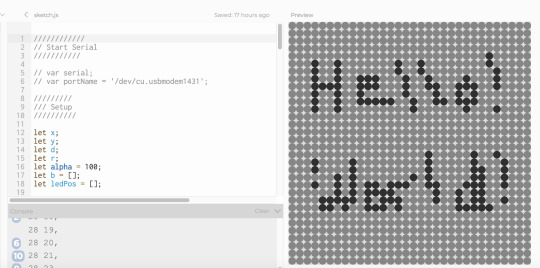
We asked a few residents and our professor (thanks, Jeff!) about their impressions of the technical side of the idea and if it fit the assignment requirements. After looking at their suggestions online and googling a few other things, we decided on a 32x32 LED matrix that is compatible with Arduino (takes 5V was important to confirm!) We considered using the programmable LED NeoPixel strips to make our own matrix, but we decided that that would be too complicated for this short project.
We took a trip to Tinkersphere and picked up the LED matrix, connecting wires and joystick. The matrix didn’t come with a datasheet, but we had found an guide and library on Adafruit. When we got back to ITP and started reading the instructions on how to connect the matrix to the Arduino, we realized that there is also a $5 chip you can buy to avoid having to do all the wiring yourself! This was a lesson in why it’s better to read the datasheet/guide carefully ahead of time!
We decided to forge ahead and connect the matrix with our own wires. We didn’t have all the right colors, so it ended up looking a little messy (we used a pen to color a white wire red…). But, it worked! We downloaded the test code from Adafruit and our matrix lit up with beautiful rainbow colors!


youtube
Establishing Communication from P5 to Arduino
The next step was figuring out how to send the p5 data to the Arduino and have that map to the LED matrix. We emailed one of the residents (thanks, Seho!) to get some pointers in which direction we might go. He explained that we could either send one number for each LED or send coordinates. We hadn’t done serial communication with sending multiple signals yet or parsing data, so we decided to first do that labs on our own, and meet again to compare what we had come up with.
Turning on and off an LED with serial output from p5:
1. Set up breadboard

2. Establish serial communication through arduino:
youtube
3. Add in serial communication from p5:
youtube
Applying the lab to our matrix:
Because we wanted to send multiple coordinates in a drawing, at first I tried sending a whole array from p5 to the Arduino. I figured once I sent the array I could have the code in Arduino loop through it and light up the corresponding LEDs. But whenever I opened the serial monitor, only part of the array seemed to get through and worse it wasn’t consistent which parts appeared.
Since SJ and I were both having trouble sending the data correctly, we decided to book office hours with a resident (Hayley!). Because we were getting weird output, Hayley helped us first establish that we were sending the data we thought we were by controlling an LED through digital communication with keys in p5 (basically another version of the lab!). Even though the data didn’t look right in the serial monitor, the LED lit up, so we knew we were on the right track.
Then we discussed with her the best way to send the coordinates. She recommended sending individual coordinates in a string instead of an array and then parsing them in Arduino. Haley also told me that using the Arduino serial monitor with p5 doesn’t work, so I’d have to send back the signal to p5 from Arduino and see it in the console there - which is probably why I was getting weird output before in the Arduino serial monitor!
I looked into parsing strings on my own and started trying the strtok() and indexOf() functions, but after having trouble getting it to work (and after a troubleshooting session with my friend Matt that didn't yield the results we wanted), I decided to go to the PComp help session. Hayley was there again and showed me the parseInt() function. By putting a comma in the middle of the two numbers, we made this function grab the strings before and after and put them into different variables for the x coordinate and y coordinates.

We first tested that this was working correctly by sending numbers in the serial monitor, then sending hard coded numbers from p5 and then sending the mouseX and mouseY positions from p5. In the first iteration, we checked that we had the correct numbers first by lighting up an LED and later once we saw that this was working by having Arduino send the variables back to p5 and print them.
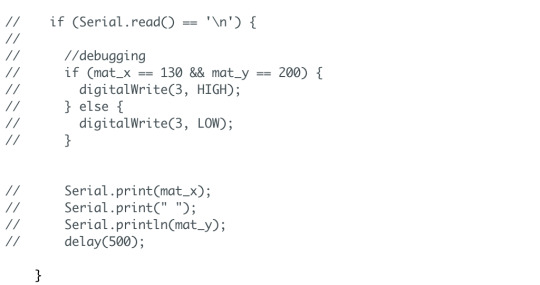
The end code looks super simple now that we have it. The hardest part was figuring out how to send and read the data because there are multiple ways of doing it on each end and there is not one “right” way. This also taught me about different ways of troubleshooting with hardware and digitally and the importance of doing this troubleshooting at the beginning and in small steps - it’s much easier to do that than to work backwards from a complicated code that isn’t working!
Arduino to LED Matrix
Now that we had established that p5 was sending the correct numbers (the mouseX and mouseY positions) and Arduino was getting the correct numbers, it was time to add the LED matrix into the equation. I tried plugging our wires back in, but the display didn’t light up correctly.
SJ and I talked and decided we needed better wires, so the next day he picked some up from Tinkersphere. We plugged them all back in and our board lit up beautifully!



Our goal was eventually to send the mouseX and mouseY coordinates, so we started by taking the following steps:
1. Run the matrix test code - this was easy now that we had the wires working!
2. Use Arduino code to light up one LED at a time by hard coding the number - also simple!
3. Use hard coded variables in Arduino to light up the LED position of our choice - no problem!
4. Light up an LED of our choice using the serial monitor in Arduino to update the variable values, simulating a signal from p5 - this worked right away since we had tested it before without the LED matrix.
5. Send a hard coded value from p5 to change the value of the xpos and ypos variables in Arduino. At first we thought that this wasn’t working when we tried sending (20, 50), but then we realized we were drawing off the grid since the grid was only 32x32 and our canvas was 400x400.
youtube
6. Replace the hard coded values in p5 with mouseX and mouseY to send to Arduino. This worked and we were so excited, but there was also a huge delay in the LEDs lighting up. We were using console.log in p5 to see what we were sending to Arduino and we kept seeing way too much information being passed back and forth, so we thought this might be the problem.
First, the coordinates were being sent multiple times every time we clicked and we also received back multiple messages from Arduino for the one coordinate we had sent. We first looked around in the p5 code for a way to prevent the coordinate from being sent multiple times - was it because draw() was looping multiple times? We tried moving the code to setup, but then nothing appeared on our sketch. Then I tried commenting out the serial.write in Arduino that was sending the message back to p5 and this got rid of the delay! I think by sending this information back to p5, the Arduino couldn’t get the next incoming serial communication from p5.
youtube
In the video above you’ll also see SJ trying to keep the mouse within 32,32 in the p5 sketch. After this we re-mapped the p5 output to be a 32x32 grid since the p5 sketch was still a 400x400 canvas. Once we did that it worked!
SJ made a drawing to show how we felt about our creation:

Video here - it won’t embed because I have too many videos in this post already: https://www.youtube.com/watch?v=0n_CPKz3eW4&feature=youtu.be
I’ll share the finishing touches and final reflections in part 2!
0 notes
Text
How you draw down your retirement savings could save you thousands — this program proves it
One of the key challenges retirees face when they shift from “wealth-accumulation mode” to “drawdown mode” is in the timing and optimization of multiple income sources.
These may include employer and government pensions, registered and non-registered investment income, annuities, any continuing earned income or business income, rental income and many more.
There may be as many as 26 distinct sources of income a retired couple may encounter, estimates Ian Moyer, a 40-year veteran of the financial industry. And it’s not as simple as merely maximizing each stream of income because tax brackets, clawbacks of government benefits and other considerations all interact in complex ways.
Ain’t no party like an OAS party: Retirement guru Jonathan Chevreau on turning 65
Solo retirement is on the rise — here’s how you can mitigate the risks
Can you trust your retirement savings to a robot?
Moyer is, like myself, aged 65 and gradually dialling down on the financial services business he created: Ian C. Moyer Insurance Agency Inc., based in Ingersoll, Ont.
When he started to plan for his own decumulation adventure, five years ago, he felt there was very little planning software out there that was both comprehensive and easy to use. So, he hired a computer programmer and created his own package, now called Cascades.
Available to financial advisers for $1,000 a year (do-it-yourself investors can negotiate a price directly), I recently put Cascades through its paces for my wife and me. A few weeks earlier, I had done the same with Better Money Choices, a do-it-yourself program being developed by Doug Dahmer, the Burlington, Ont.-based founder of Retirement Navigator.
The first problem Cascades tackles is a common one: Is it more tax-effective if you draw down first on non-registered income sources, registered ones, or both? Or even tax-free sources like TFSAs? Like Dahmer, Moyer agrees the TFSA is generally the last mode the average retiree will want to tap. It’s there for estate planning, emergencies or perhaps long-term care at the end of life, Moyer said in a recent interview.
In our family’s case, in the first run the software took our inputs and concluded our ultimate estate would be a few hundred thousand larger if we drew first on non-registered funds, then registered, and finally TFSA. Non-registered first, it told us, defers the income taxes payable on registered investments, a strategy many retirees (and some advisers) intuitively feel makes sense.
However, Cascades permitted us to tweak our existing plan to maximize CPP by delaying receipt of benefits till 70. However, we would take Old Age Security (OAS) as soon as it is on offer at 65.
In the absence of both full-time employment income and CPP benefits between 65 and 71, we planned to bridge the gap by drawing down on our RRSPs (or creating early RRIFs in parallel) once we no longer occupied the top tax brackets. That, after all, has always been the purpose of RRSPs: get a tax deduction while you’re making top dollar, and withdraw from it in old age when you are in a lower bracket.
Cascades generates a comprehensive projection to age 102 that shows year by year exactly what your sources of income will be, any tax consequences and/or benefit clawbacks, and generally illustrates all the complex aspects of decumulation. You’ll be left thinking that by comparison, wealth accumulation was a relative snap!
I found you could enter the inputs in half an hour, assuming your data (including perhaps investment balances and your last tax return) are at hand. Moyer’s team create the results the next day, much of it automatically generated by the software, although some human mediation may be necessary.
The first inputs are naturally names and birth dates, with life expectancies obtained from the Society of Actuaries Annuity 2000 Basic Table. Income and savings are reported in “today’s dollars” by taking a present value at 2 per cent annual inflation, which is applied to CPP, OAS, pensions if applicable, tax bracket thresholds and tax credit amounts and others.
The program shows income snapshots at various ages, with precise estimates of OAS, CPP, DB pensions, registered and non-registered savings, business dividends and annuities and other income. It shows disposable income and taxes payable, and finally a net worth statement.
An investment summary shows graphically how non-registered savings slowly decline, how registered funds keep climbing till 2026 or so, and are exhausted around 2048. At that point, the non-registered and TFSA amounts are about equal: all the time the first two sources are falling, the TFSA keeps rising because it is, as Dahmer has dubbed it, the “never never” fund. Naturally, Cascades recommends shifting as much taxable savings to a TFSA as new room is generated with each passing year.
It’s fascinating to compare year-by-year outputs for both spouses. In our early years of retirement, my modest employer pensions are split with my wife for tax purposes, as she lacks such a pension. However, her RRSP and ultimately RRIF will be larger by a commensurate amount, and at some point, the program ceases splitting my employer pensions with her and begins to split her RRIF income with me. Some years there are modest OAS clawbacks, some not.
Projected rates of return vary from a Conservative 4 per cent (based on 70 per cent fixed income to 30 per cent equity), to a Moderate 5 per cent (60/40 asset allocation), 6 per cent Growth (40/60) and 7 per cent Aggressive (30/70). Asset allocation will affect tax rates for non-registered portfolios.
The program makes several recommendations. One was to manage sequence-of-returns risk using annuities or segregated funds; another is reducing taking registered income to avoid OAS clawbacks. It also calculates annual RRIF payments starting at age 72. The latter assume a 5 per cent rate of return and are projected to reach zero in our mid 90s. Both of these are in the OAS clawback zone, which reinforced my original notion of drawing down early on RRSPs in the second half of our 60s.
Throughout, the emphasis is on finding the “winning strategy,” defined as providing clients the highest estate value, net of taxes and fees, at the expected life expectancy.
All in all, a valuable tool, and one that if deployed while still contemplating imminent retirement or semi-retirement could well influence the timing of several key decisions. Dahmer says he’s pleased that others are waking up to the need for tax planning in the drawdown years: “Cascades provides a very good, easy-to-use introduction to these concepts.”
Jonathan Chevreau is founder of the Financial Independence Hub, author of Findependence Day and co-author of Victory Lap Retirement. He can be reached at [email protected]
from Financial Post https://ift.tt/2u1Mh0u
via IFTTT Blogger Mortgage
Tumblr Mortgage
Evernote Mortgage
Wordpress Mortgage
href="https://www.diigo.com/user/gelsi11">Diigo Mortgage
0 notes